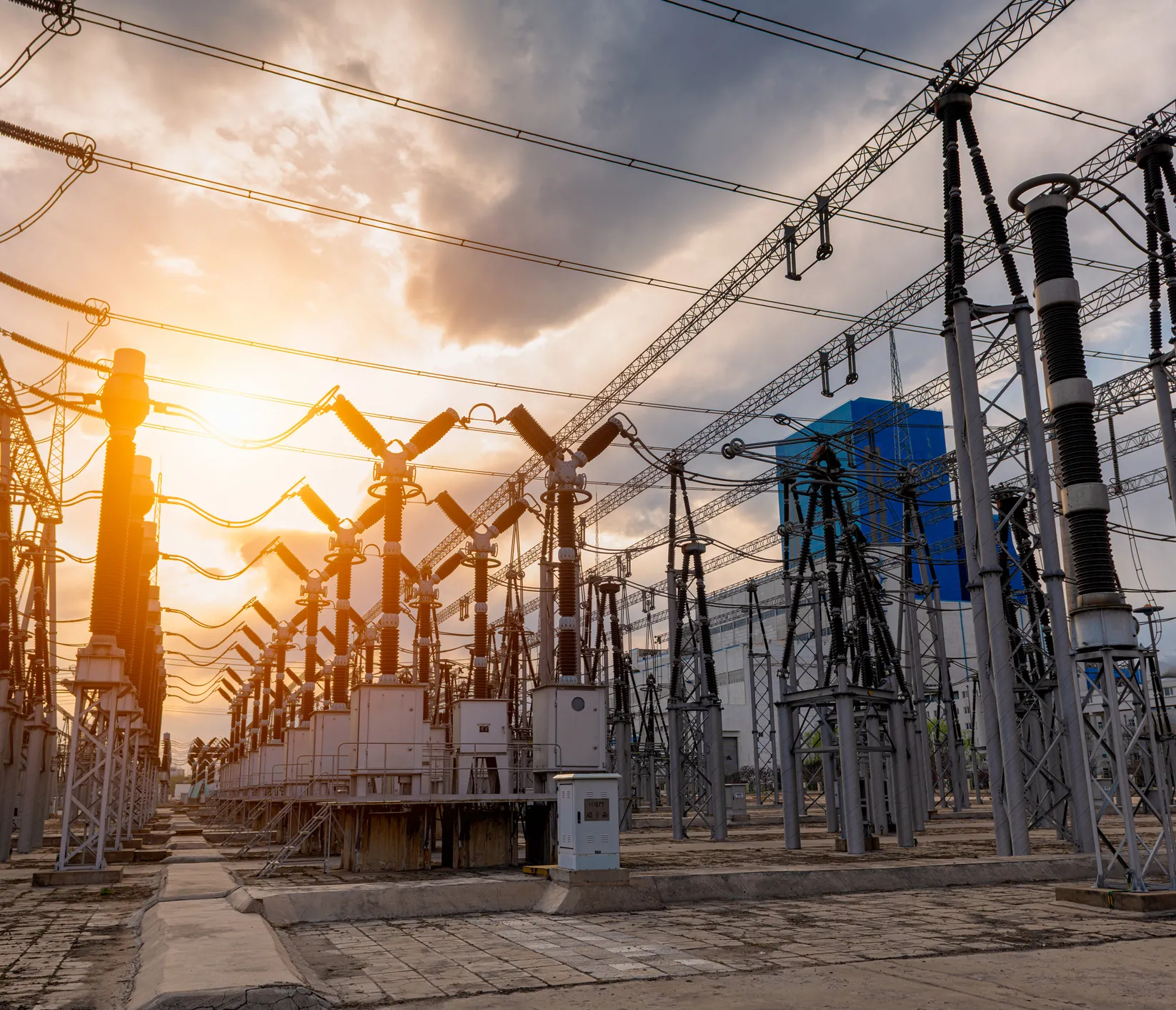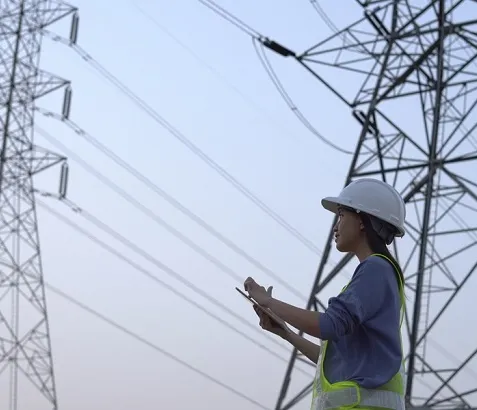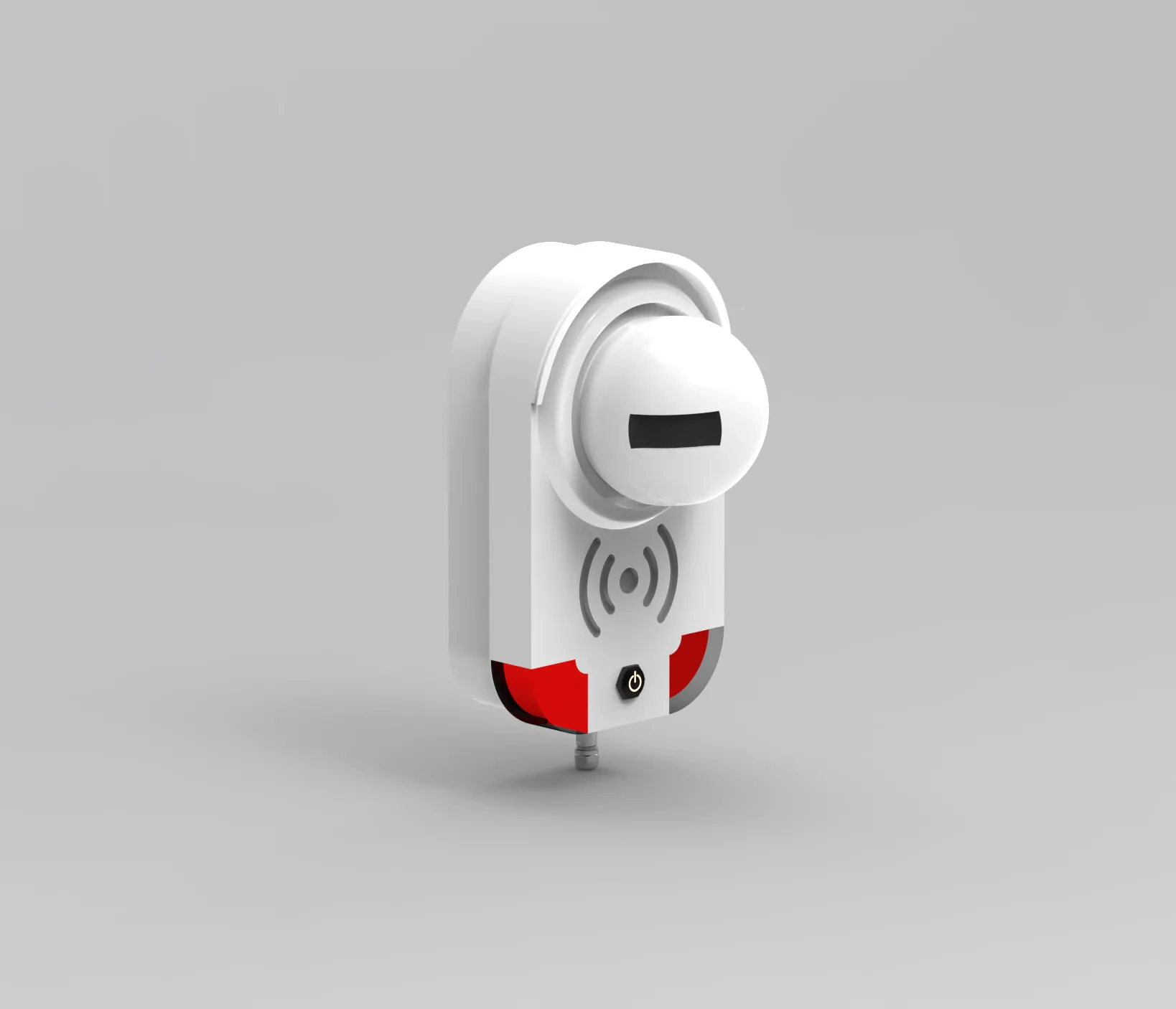We apply AI and advanced analytics in order to generate efficiencies in our processes and thus increase the availability of our infrastructures, boost the integration of renewables and improve the safety of our professionals.

Electric grid infrastructures and asset management
Completed
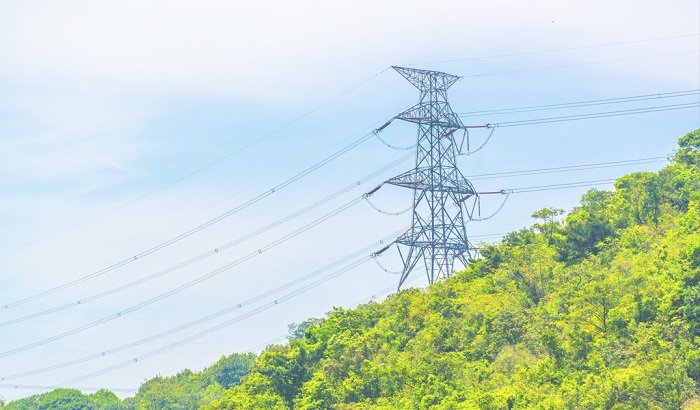
Red Eléctrica is implementing a new vegetation management model for its power lines. Until now, the identification of vegetation species was done through manual photo-interpretation techniques.
Through this project, alongside our partner Overstory, we have created a series of algorithms that automate the photointerpretation of tree and shrub species from satellite images and images from the National Aerial Orthophotography Plan (PNOA).
Species identification for the province of Zamora.
The analysis is extended to the rest of the geography, addressing the identification of species according to each region.
To optimise activities and transversal processes
Active

Enables the budgeting and planning of investment projects in the Transport Network using all the information available and specific to each project. These are feedback and automatic learning models to be applied during the life cycle of the projects.
Objective: to improve management of the investment activity of the company and decision-making in the DC and DGT based on the use of the information generated in the activity of the projects.
To deploy a new version of the cost and duration estimation models for investment projects.
Increase employees safety and wellness
Completed
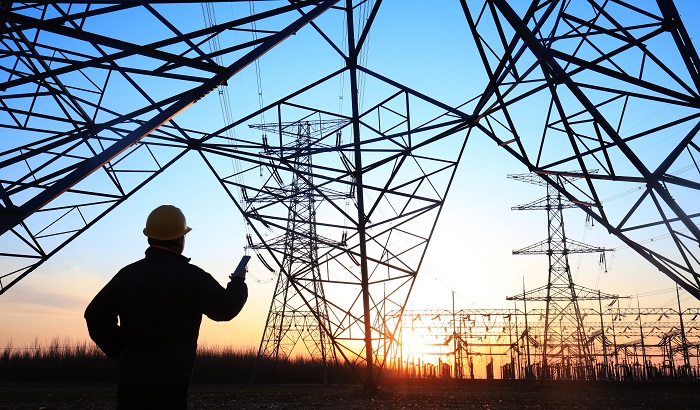
The goal of this project is to switch from a reactive/preventive model to a predictive model in the area of occupational health and safety. We make use of the traceability and digital footprint of the data and information provided by the management tools and applications of the Red Eléctrica Group to make analyses with descriptive (what happened), predictive (what could happen) and prescriptive models (what can we do to stop it happening) The first goal of the project is to use Artificial Intelligence methods to create a probability indicator of the risk of accidents and issues associated with any maintenance and construction work.
Concept and data modelling.
Data collection, ordering and processing.
Data analysis and visualisation of the results.
A foundation is created for applying models for predicting the risk of accidents and issues related to maintenance and construction work.
Operation of the electrical system and integration of renewables
Active

The CONPP project aims to develop a methodology for forecast probability intervals calculation, combining the intervals of the individual predictors of the suppliers with the best accuracy, which provide the hourly demand and production forecast curves at the level of each system. The main objective of this work is the development of a procedure for the construction of prediction intervals associated to forecasts obtained as combinations of independent model and supplier predictors.
• Definition of methodology to calculate the probability bands of the combined wind forecast from the probability bands of the individual forecasts participating in the combination.
• Definition of methodology to assess the goodness of fit of the probability bands provided by the individual forecasts of the different suppliers.
• Exploration and evaluation of its implementation in the field of renewable production (wind and photovoltaic) and demand, as well as to apply it to all peninsular and non-peninsular systems.
New services and business models
Active

Casandra is an innovative response to the changing needs of electrical planning which offers adaptable tools for carrying out electrical studies with which to address current and future challenges of the sector in an agile and efficient way. The project came about in order to unite these and other initiatives and provide a common response to the needs of the Electrical Planning process, offering an ambitious response and comprehensive solution to address three essential areas in the electrical planning process.
• Since 2019, we having been working on the development of new tools to improve agility and efficiency: a web portal for interacting with external parties, a web portal for planning, and a web portal for editing, viewing, and simulating electricity grid models.
• Currently, several modules are underway and at various stages, combining internal and external developments. These latest developments were achieved jointly with the consultant Apogea, with significant advancements in the different lines of work.
• The development of online libraries that will help gather data for planning and comparing different future scenarios. This module is expected to be completed before the end of the year.
• A specialised database that will allow multiple versions of the electricity grid to be managed, with change monitoring. We expect it to be ready in the first six months of 2024.
Electricity grid infrastructure and asset management
Active

The project is of vital importance for the future of visual inspections, as it represents a significant advancement that will help technicians easily detect anomalies in a grid of over 45,000 km of high-voltage lines. The synthetic image project, within the DALIA framework, is making advancements in training artificial intelligence models with synthetic images to improve the software’s efficiency and scalability.
The objective is to improve the efficiency of visual inspections of overhead lines, an essential task in guaranteeing the supply of electricity to the population at all times.
Operation of the electricity system and integration of renewable energy sources
Active

Generation and demand forecasts significantly affect the company's high-impact activities, such as guaranteeing the customers' electricity supply, ensuring appropriate planning of the transmission grid or explaining studies on electricity demand coverage to stakeholders. The main purpose of this project is to harmonise the forecasting models and methodologies used for the various processes and to conduct research to improve the different forecasting models and their implementation in order to better adapt to the current and future challenges of the energy sector.
• Completion of the project is scheduled for the coming months, with the aim of implementing the improvements identified to provide a more efficient and stable service.
Safety and wellness of people
Finished

The project involved the automatic creation of stakeholder profiles of Red Eléctrica's transmission planning team and the identification of their perception of the company based on the analysis of communications in text format, using Argilla's Biome tool.
• Phase I: Development of a text-based communications database for training AI models
• Phase II: Data analysis using the Argilla tool.
• During the project, several versions of the stakeholder model were generated, trained on each interaction with a larger amount of data.
Electric infrastructures and
asset management
Active
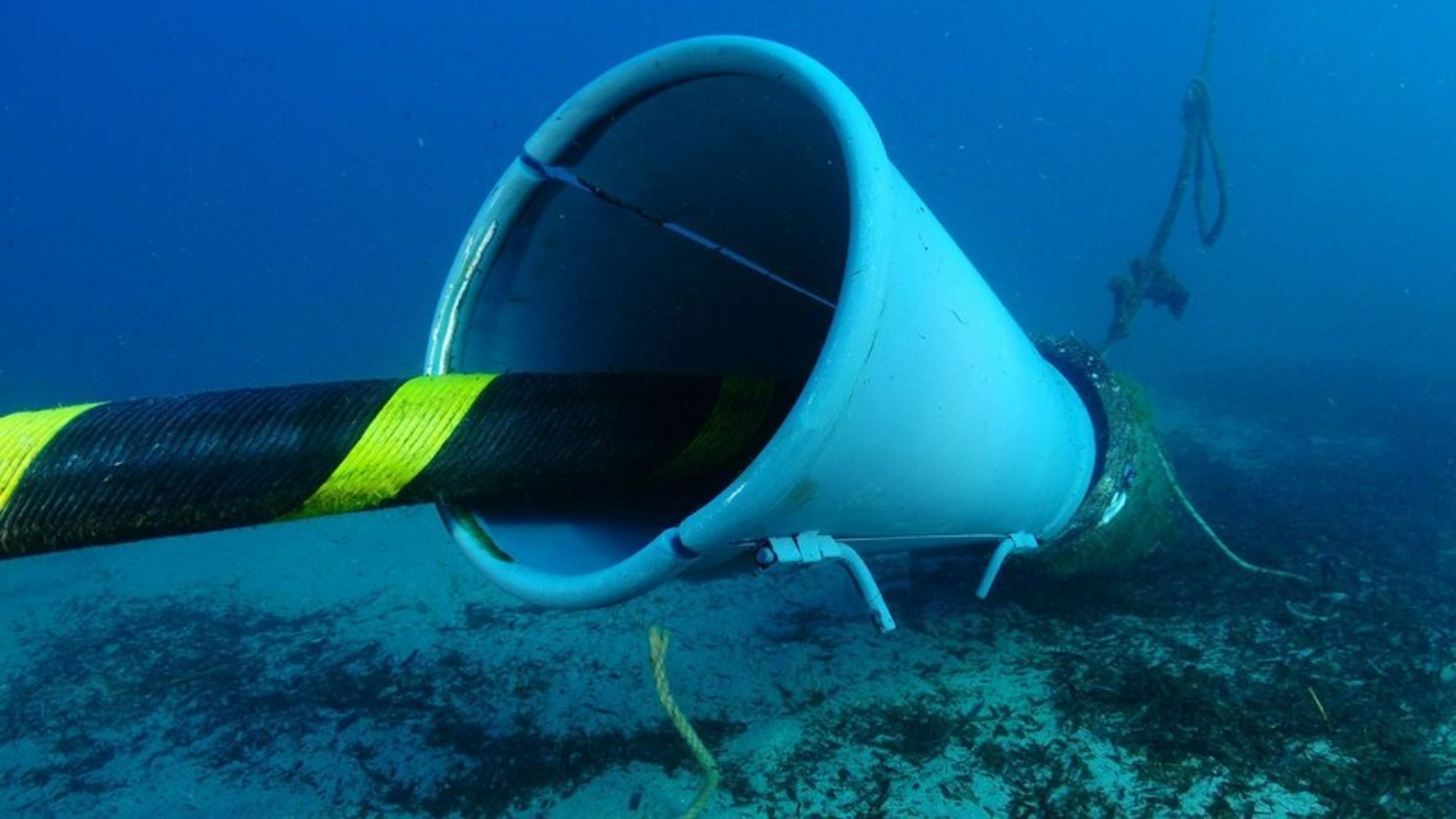
Red Eléctrica currently has 1,200 kilometers of submarine cables on service that enable the transport of electricity under the sea or ocean, but their maintenance and potential repairs are very complex due to their difficult access. With the aim of developing a solution that facilitates the work of technicians and engineers, Elewit, through its fourth Venture Client program, launched a project with the startup Akselos, a company that has one of the most advanced engineering simulation software in the world.
• PHASE I: The project aimed to develop a software tool, adapting the Akselos algorithm to Red Eléctrica's submarine cable study scenarios, thus generating a mechanical model of the cable that could take information from bathymetries for advanced calculations.
• PHASE II: Thanks to the positive results of the previous phase, a detailed analysis of a free span detected in the Majorca-Ibiza cable will be carried out with the developed software and eventually, an analysis focused on the free spans of the route of the future submarine link between Tenerife and La Gomera will be carried out.
• During the project, two possible application cases were analyzed: to evaluate the effect of free spans on the cables and to perform simulations before the maneuvers. The results of the project showed that the software developed is precise enough to apply the Akselos technology to real case studies.
Safety and wellness of people
Active

The analysis of documentation involves a high workload given the extensive volume of information involved. As a consequence, Elewit, in collaboration with the Grid Access Department, has promoted this project in which we have explored how LLM (Large Language Models) used in generative AI can help streamline processes that require analysis and summarization of extensive and heterogeneous documentation. Specifically, a proof of concept has been developed to evaluate and validate the advantages offered by this technology compared to others which has demonstrated that generative AI is a potential key technology to streamline and simplify this type of processes.
• Phase I: Development of a Proof of Concept with Red Eléctrica's grid access team to evaluate and validate the advantages offered by generative AI in streamlining processes that require analysis and summarization of extensive and heterogeneous documentation.
• Phase II: Future projects with this department of Red Eléctrica on various use cases applying generative AI to improve efficiency in their processes might be proposed.
• The results obtained through this proof of concept have confirmed that generative AI is a potential key technology in this type of business processes in which knowledge of applicable legislation and existing precedents, as well as technical knowledge, play a fundamental role.
Electrical grid facilities and asset management
Completed
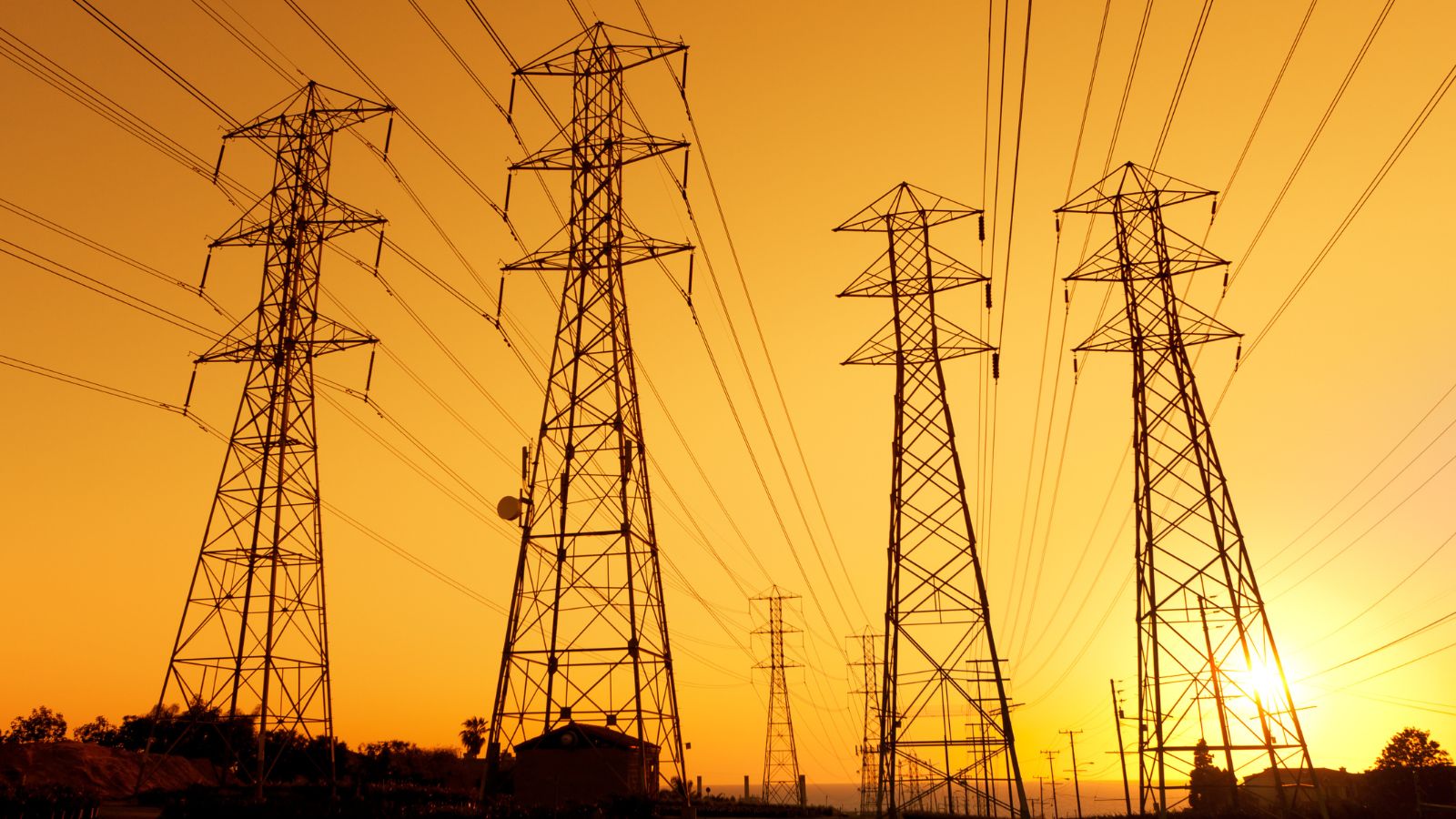
The GridCal and Newton improvement project for electrical planning, developed by Elewit and Red Eléctrica’s electrical planning and system operation model teams, has represented a significant step forward in electrical grid simulation capabilities. It uses the open-source software GridCal as an interface for the design and simulation of electrical grids, complementing other tools in national planning.
• Phase I: the project has enabled Red Eléctrica to optimise the use of the open-source software GridCal as an interface for the design and simulation of electrical grids, complementing the set of tools used in national planning analysis.
• Phase II: being open-source software, GridCal allows its development to continue independently of the project. Additionally, Elewit and Red Eléctrica plan to use GridCal in European projects such as TwinEU and InterScada.
• The GridCal and Newton improvement project for electrical planning represents a significant step forward in the simulation capabilities of electrical grids, as new advanced functionalities have been developed to meet current needs and foresee future requirements in the electrical sector. From an economic and functional perspective, the use of sophisticated open-source software allows for faster and more satisfactory validation and adoption of R&D&I than one-off effort.
As a critical infrastructure operator, we take cybersecurity as a key pillar that guarantees our mission: providing essential services. We focus at enhancing the development of secure asset management tools, increasing the efficiency and sustainability of our operations.

Optimizar y automatizar la seguridad de las tecnologías de la información y de las tecnologías de la operación
Completed
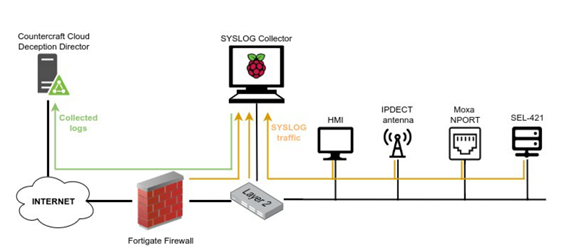
The CounterCraft company has a cyber deception platform that consists of recreating realistic virtual environments to deceive potential attackers and extract as much information as possible about them. The CounterCraft pilot had a twofold objective: on the one hand, a mock-up of a power substation connected to the internet was created, emulating the data traffic and accessible functionality as if it were a real, physical substation.
The CounterCraft tool monitored this mock-up to obtain information and profile the attackers (locations, IPs, tools and scripts, vulnerabilities, etc.). On the other hand, the information emulated by the mock-up was collected to extend this tool and thus facilitate the deployment of new realistic virtual mock-ups while Countercraft completes its range of solutions. The project was successfully completed and has provided relevant information that will undoubtedly increase the resilience of the systems, leading to further proofs of concept.
Blind exposure of public IP to the internet.
Dissemination of internet "hints" to public IP of simulated substation.
Validation in a laboratory environment emulating a real system.
Optimization and automation of OT and IT security
Active
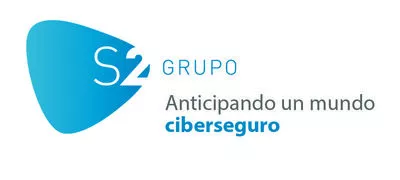




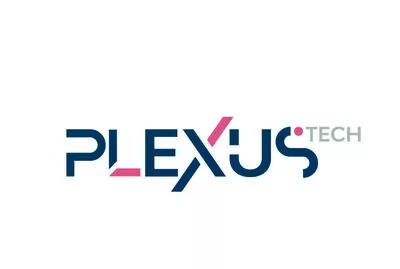


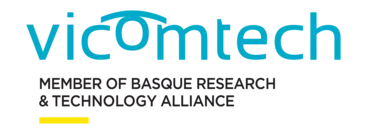

The objective of the SLISE project is to mitigate the vulnerabilities that the new virtualization technologies adopted massively at the core of the 5G architecture (and which are already part of the technical drafts of the sixth generation) have dragged into the new paradigm of communications as a service. Specifically, research into new algorithms is proposed: incident analysis, encryption, radio attack detection identification and automated response; in a more flexible context to face the risks inherent to virtualization technologies: Network Function Virtualization (NFV), Software Defined Networks (SDN) and Network Slicing (NS). All this will be studied, defining demanding indicators that broadly cover these objectives, in a set of use scenarios that present different protection priorities and that include the use of communications in the context of critical infrastructure management, as well as the use of communications in the manufacturing industry.
Definition of requirements and use cases.
Definition of 5G system protection and detection of attacks and anomalies.
Demonstrator Deployment.
Evaluation.
Safety and wellness of people
Active

The Kymatio project is a web-based training program for professionals, dedicated to the cyber-awareness and the assessment of their alertness in an unattended and personalized way, while providing a risk management tool associated with the human element with metrics, evolution over time and action plans.
In 2021 Redeia developed the Kymatio innovation project, which consists of managing the cyber risk of the company's employees.
Nowadays, there is a firm commitment from all Redeia professionals and its subsidiaries (Red Eléctrica, Reintel, Hispasat, Redinter and Elewit) to participate in this cybersecurity awareness program to boost the state of alertness and behavior of our professionals in the face of potential threats.
• High participation, with 72% of registrants completing this cybersecurity awareness program.
• Redeia's Corporate Security team confirmed that Kymatio is the optimal solution for raising awareness, measuring cybersecurity alertness and making the company's human cyber risk management visible.
Conectividad activos y sociedad
Complete

Red Eléctrica has developed a project with the cybersecurity startup Radiflow leveraging the technology offered by its iSID industrial threat detection and management platform. This anomaly detection and OT (Operational Technology) visibility suite allows to improve the security of industrial networks through a complete visualization of the network, threat detection and management of communication policies between devices. It must be noted that the collaboration between Radiflow and Red Eléctrica was born thanks to the startup's participation in Elewit's IV Venture-Client program and that it will continue due to the fact that the solution they are proposing is being implemented in Red Eléctrica's infrastructure.
Development of a project with the objective of monitoring data traffic in Red Eléctrica environments to evaluate the Deep Packet Inspection (DPI) capabilities of OT communications protocols and cyber anomaly detection.
Throughout the project, the traffic was analyzed with the technology of the startup Radilflow and simultaneously, it was monitored using another intrusion detection solution (IDS) with OT (Operational Technology) capabilities. After analyzing the results of the project, it has been demonstrated that Radiflow's iSID technology has great analysis capabilities for industrial traffic, detecting anomalies with a much higher efficiency than the other evaluated solution.
Big Data is the work related to massive data analysis. A quantity, so vast, that traditional processing software applications cannot capture, process and add value in a feasible amount of time. Likewise, this very same term refers to new technologies that make data storage and processing possible, as well as the use that is made of it.

Optimize system operation and increase reliability and flexibility of the grid
Active
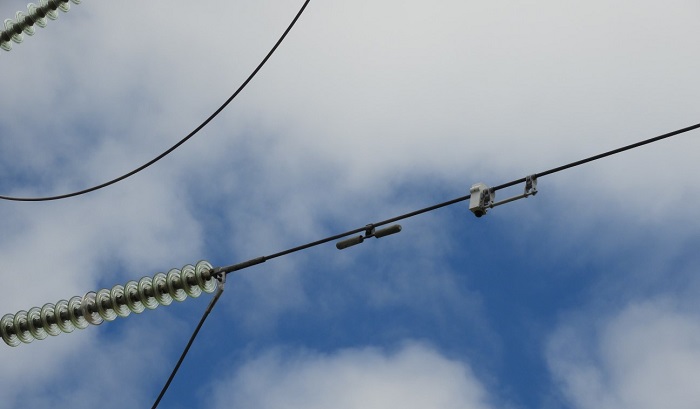
The project aims to develop a transmission grid based on local and remote monitoring and sensors, operating with transmission categories calculated in real time. These capacities are calculated using a thermal model of the line and data obtained from the monitoring of immediate atmospheric conditions and/or the physical parameters of the installation along its full length. This will enable us to access the capacity that has so far been blocked by the circuits, giving us better knowledge of their real conditions. The result is more flexible and safer operations.
Identify needs and design.
Implementation.
Validation.
Consolidation and expansion.
To optimise activities and transversal processes
Active

Implementation of Process Mining for the analysis and identification of inefficiencies such as bottlenecks, degree of automation, rejections, approval flow times, and opportunities to optimise the business processes of the company. The incubation project will test different Process Mining tools and will design and optimise the application flow of this type of techniques in corporate processes.
Objective: To optimise business processes in the sales/purchasing areas in order to reduce costs.
To implement the process mining technique/technology in Red Eléctrica as another service within the DTI portfolio.
To optimise system operation and increase network flexibility and resilience
Active
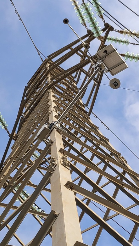
At #Elewit, together with Accenture, we are developing a pilot project to predict the capacity of lines in future time horizons, as the calculation and prediction of the capacity of overhead electricity lines (DLR) is key, among other things, to improve the safety of the lines, to minimise the damage caused by breakdowns and failures and to contribute to guaranteeing supply and the balance between demand and generation.
• To improve the accuracy and extend the models developed by Red Eléctrica for the prediction of meteorological variables
• To implement the different algorithms, sending the predictions to other Red Eléctrica systems
• Systematic evaluation of their operation and continuous monitoring of their accuracy
Optimize system operation and increase reliability and flexibility of the grid
Completed
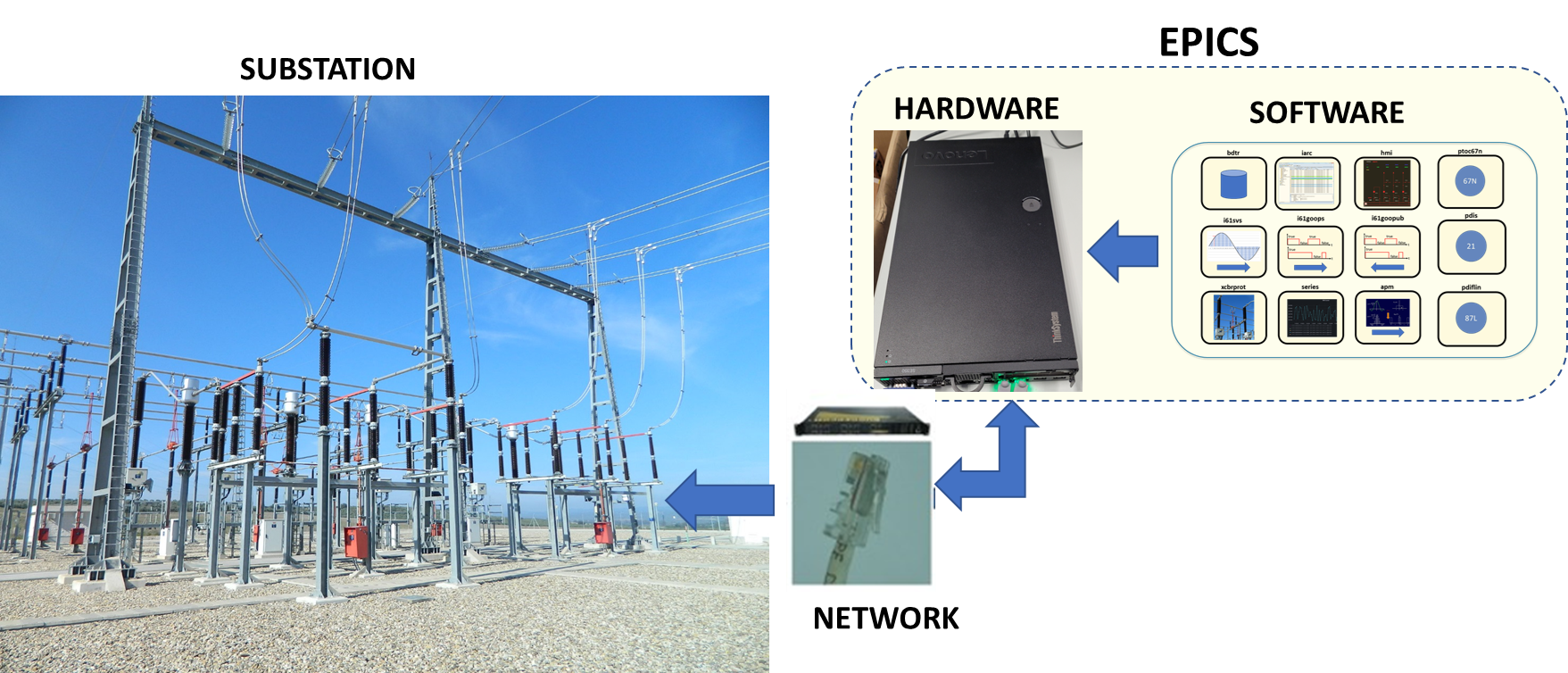
Current automatic substation systems are distributed systems in which the software is associated with specific hardware. Therefore, the possibility of innovating with new algorithms is conditioned by the existing software-hardware assemblies.
Through this project, we intend to create an executable software platform on general hardware platforms, applying Edge technology concepts and microservices, creating a virtualised environment capable of implementing the functions of the automatic substation system and with a high capacity for integrating new functions into the system.
Project carried out together with partners NEARBY Computing, CIRCE, ZIV Automation, Indizen and INDRA-Minsait.
Definition of a MVP for one bay sub-station automation system.
Scaling up of the MVP for a complete sub-station.
Validation of the PMV developed in a real conditioned environment.
To optimise system operation and increase network flexibility and resilience
Active
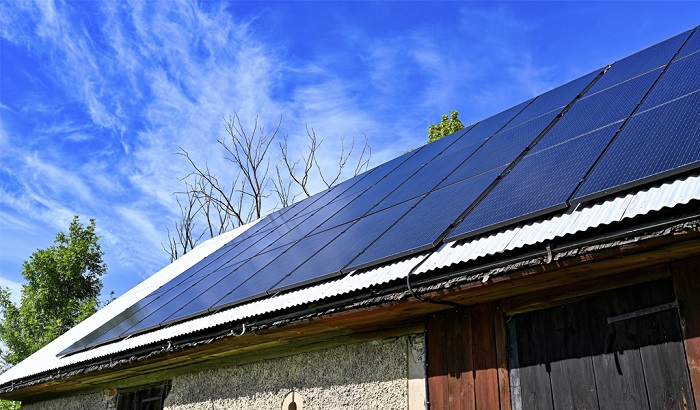
Its goal is to see the real level of small-scale self-supply (P <1MW) because there is no plan for real-time measurements or metering for the amount generated. The information, however, is available in the IoT and the cloud. The platform makes monitoring possible in real time, enabling us to estimate production in the system and to make forecasts.
Minimum Viable Product: platform created and integrated with data from manufacturers of inverters (registration and collection of data) and self-supply assets. Enable operations in real time and issue self-supply certificates.
Self-consumption platform with generation data from different self-consumers' facilities
Increase employees safety and wellness
Active
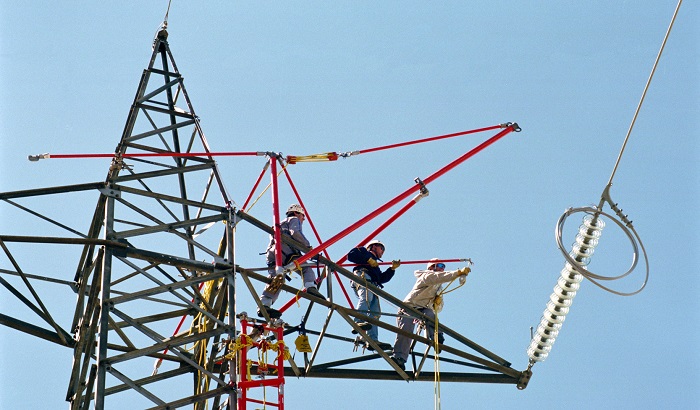
This project is intended to ensure the safety of people and facilities in discharge operations, removing situations of risk for operators associated with their work in protected zones and accompanying tasks, as part of the Red Eléctrica Group’s strategic goal of “zero accidents”.
Minimum Viable Product: basic offline implementation (without integrations) and operations.
Satisfaction survey.
To improve network development and asset management efficiency
Active
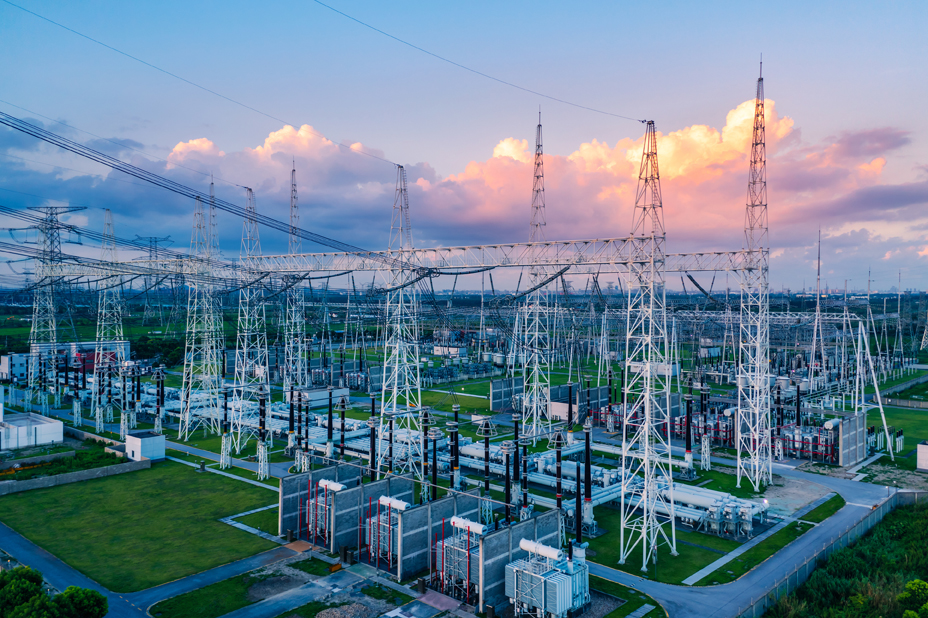
Strategos is a calculation tool that enables the optimisation of the portfolio of investment projects for the development and maintenance of the electricity transmission network. Through the implementation of Machine Learning techniques and Redeia's own know-how, the tool optimises decision-making when executing a set of investment projects.
In addition, it allows to simulate and estimate the risks associated with the implementation of projects, thus helping decision-making.
Project portfolio optimisation and simulation tool
Operating electricity system and integrating renewable energy sources
Active
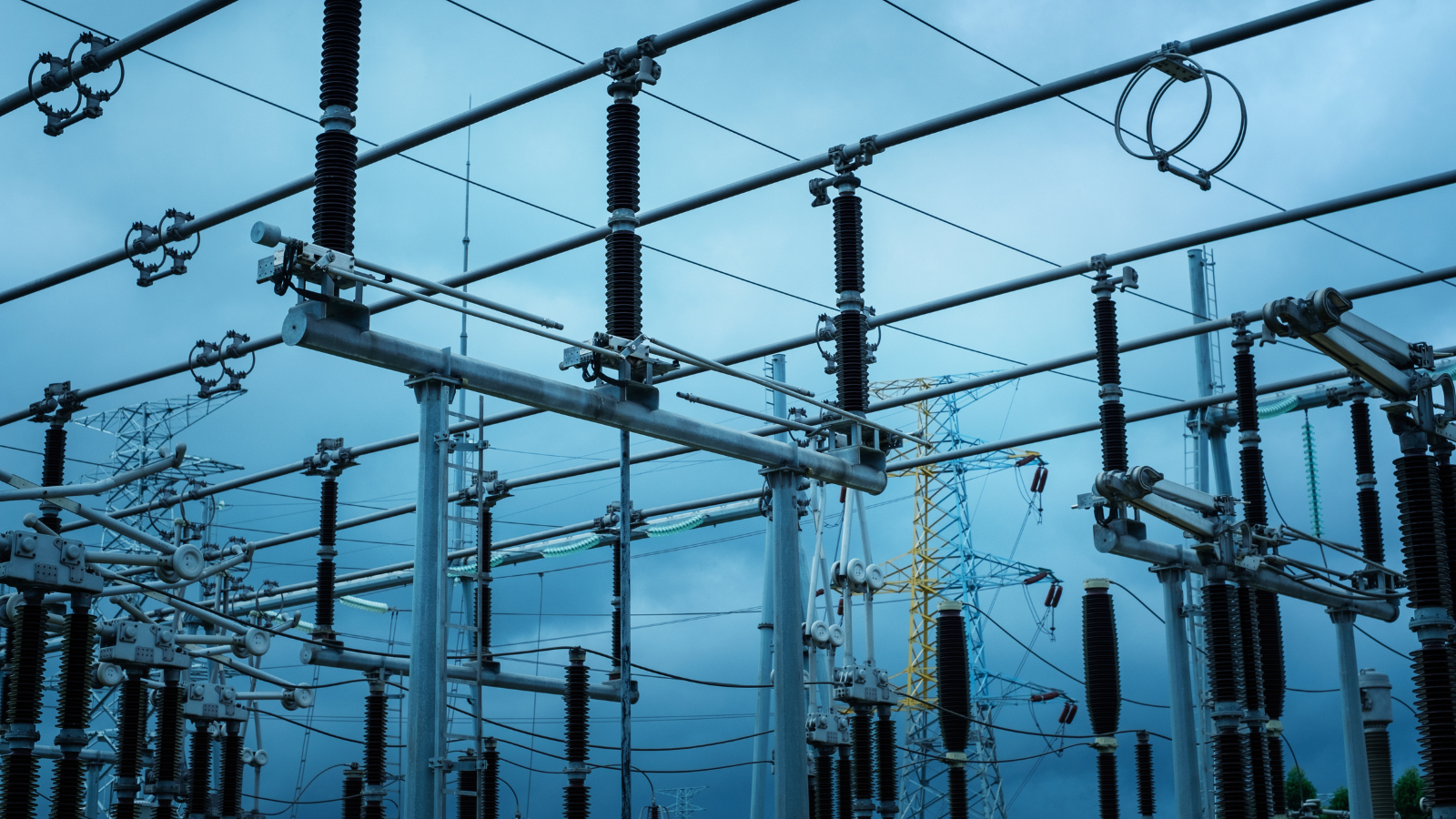
Barbara is developing a tool based on edge computing to obtain a real-time representation of the status of different elements at an electricity substation when an incident occurs (typically a short circuit). Therefore, technicians will be able to access the data for both monitoring and analysis more quickly than they can now.
Edge computing is a type of on-site computing that relies on collecting and processing data from the hardware itself rather than sending it to the cloud or somewhere else for analysis, as do most IoT-based systems (Internet of Things), which are more passive in nature.
Phase I: Successfully passed laboratory tests.
Phase II: In the process of validating its use in relevant environments in order to study its implementation at Red Eléctrica.
• Improved system reliability: by identifying the causes of a trip, measures can be taken to prevent future faults and improve the reliability of the entire electricity system.
• Predictive grid maintenance: by analysing trips, maintenance strategies can be implemented on components before faults occur.
• Optimisation of substation operation: the information provided by trip analyses can be used to optimise substation operation and improve the efficiency of power transmission and distribution.
Operating the electrical system and integration of renewable sources
Active

The inter-area oscillation damping project is taking advantage of the boost in artificial intelligence and, more specifically, machine learning, to develop software which is capable of conducting efficient predictive analysis.
Studying the viability of implementing a new algorithm to calculate damping and the influence of variables and its potential implementation in software tools, with the aim of providing highly important information to operators about the contribution of grid components connected at any time to the damping. As a result, this will allow manual calculations to be carried out by technicians, as well as offer predictions made by AI, and allow real accumulated errors to be monitored.
We aim for maintenance process optimization using satellite communication and 5G features, reinforcing the security of facilities and professionals and improving response time to any eventuality. Satellite communications as a backup of the 5G terrestrial network can ensure a high performance connection in any geographical point and scenario.

To generate new services and business models around current assets
Active
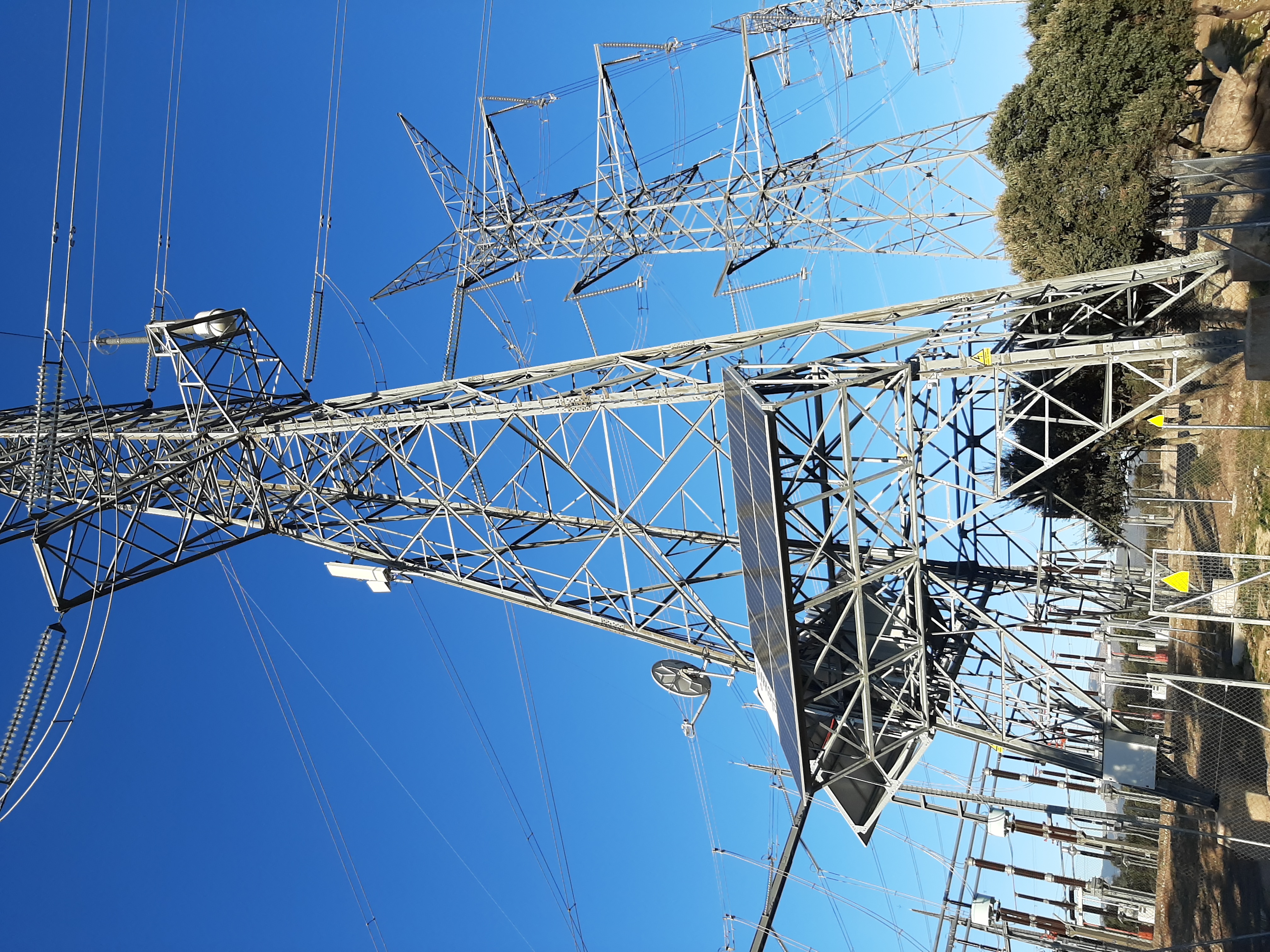
The objective of this project is to validate the electricity infrastructures of Red Eléctrica as a suitable site for 5G systems. In this way, a roadmap is established with the implementation of several minimum viable products (MVP) with which to accumulate experience on the installation of 5G systems in the networks (requirements, special needs, etc.) and to check the possible impact on the environment of the facilities themselves.
Installation of 5G antennas in a substation.
Installation of solar panels on an electricity support to autonomously power satellite equipment also installed on the same support.
Installation of 5G antennas on an electricity support with power supply via power voltage transformer (PVT) to 5G equipment.
Installation of a disconnector in the support to isolate the PVT in case of failure.
Optimize system operation and increase reliability and flexibility of the grid
Completed

Together with Orange, Huawei and the Red Eléctrica Group, we are working to develop a pilot that can analyse the potential of 5G technology for protection, control and automation systems. The pilot will show the potential of 5G for these systems: they will become independent from the means of access to the communications network (fibre optics or 5G), which makes it possible to make new designs and optimise the infrastructure required, making it suitable to the needs, criteria and philosophy of the different agents. There are 3 different scenarios proposed to replace usual communications via fibre optics with 5G radio solutions:
- 5G for WAMPAC
- 5G for line protections
- 5G to deploy the process bus outside the sub-station
- Replace the line protection by its digital twin
use 5G technology to replace the communications between phasor measurement units (PMU) in the sub-stations and a phasor data concentrator (PDC), located in a remote location.
Analysis of 5G communications of line differential protection equipment located at each end of a power line, the sending of digitalised analogue measurements to a remote location, again using 5G to access the communications network.
Enable connectivity everywhere
Completed
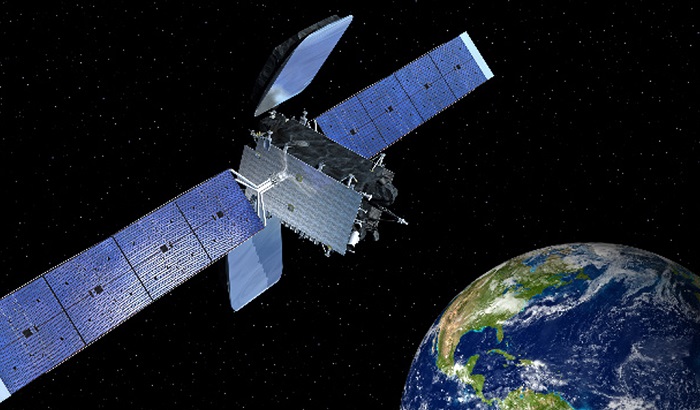
Together with Orange, Huawei, Arbórea Intellbird and Hispasat we are implementing 5G technology to make real time analyses of accident scenarios in critical infrastructures, enabling us to carry out inspections of critical aspects of our infrastructures using remotely controlled and robotic systems.
This will improve our response time by incorporating inspection processes and the analysis of critical infrastructures, increasing their safety. It is also proposed to include communication satellites as backup for the terrestrial 5G network via Network Slicing in different situations.
The layout of the high-voltage line, along with various Red Eléctrica sub-stations in the Community of Valencia will be the sites selected to run a test that will place special emphasis on the first section of the Morvedre-Eliana line.
Electric grid infrastructures and asset management
Finalished

Through Elewit's venture client program, Red Eléctrica and Orbital EOS are exploring the capabilities of satellite image analysis to identify faults in high-voltage power lines and thus reduce asset restoration times. The results of the project demonstrate that the satellite capture of SAR images can detect faults on high-voltage power lines.
Simulation and visualization of different damages that could take place in aerial power lines.
Analysis of aspects such as image accuracy, requirements for effective image capture and their viability for visualizing different types of faults.
We take it as an opportunity for machines to automatically perform tasks which may be dangerous or difficult for humans. The goal is to develop robotics towards self-sufficiency, with human inspired sensing capabilities, such as vision and touch that allow, on the one hand, mobility in an unstructured environment and, on the other hand, coexistence with humans in substations.
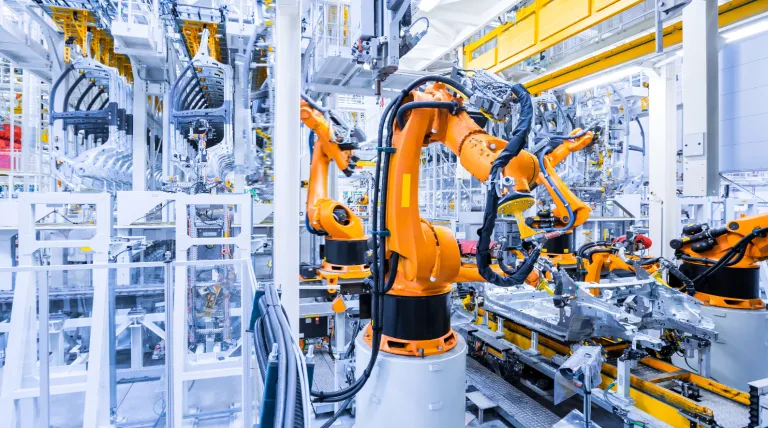
To improve network development and asset management efficiency
Completed
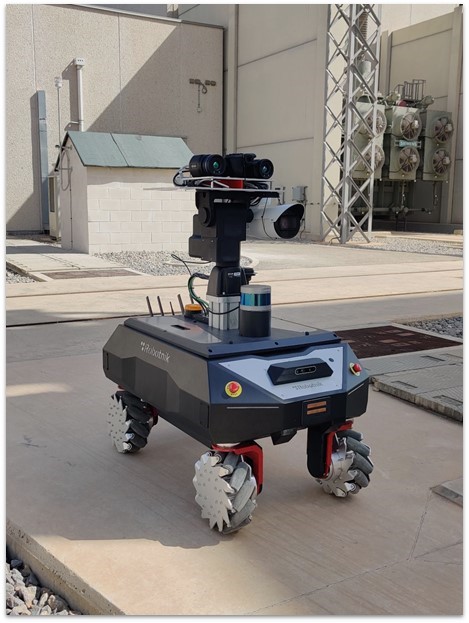
A network of cameras with different vision spectrums has been implemented at the Morvedre converter station, attached to the Morvedre-400kV substation, to inspect the state of the different elements of the substation, detect SF6 leaks, identify and record partial discharges and identify and control hot spots in any element of the installation.
The images captured are analysed and processed by the Edge Computing located in the same installation, applying artificial vision algorithms to report data of interest for the operation and maintenance of the substation to the different users in real time and without supervision.
To minimise the camera network, all of them are motorised with pan-tilt and some are located in fixed locations while others are housed in AGV robots to facilitate the inspection of elements that are more difficult to access.
• Use of autonomous robots in a transmission substation
• Use of Edge Computing in a substation
• Implementation of SF6 detection cameras and partial discharge detection cameras in robots
• Implementation of 5G communications in all elements of the system
• Implementation of artificial vision for the analysis of the inspection carried out both from the robot and from fixed cameras with different vision spectrum
Health and safety of personnel
Completed

Developed by Elewit in collaboration with Red Eléctrica and High Line Division S.L., this project has used a drone to measure air quality in the splicing chambers of underground cables in real time. This improves the safety of maintenance personnel and optimises operational and maintenance processes of underground electrical lines.
Development of a simple semi-autonomous solution that allows automatic monitoring of air quality in confined spaces, such as an electrical splicing chamber, without the need for personnel to be present inside the space or the installation of fixed equipment within the area to be measured.
Real-time measurement of gases inside a live splicing chamber using a drone operated from the outside in Beyond Visual Line of Sight (BVLOS) mode, i.e. without visual contact with the aircraft, remotely controlling it from a station and capturing real-time data on the condition of the facilities.
The project results demonstrate that the use of drones can improve personnel safety during maintenance tasks by enabling an initial assessment of the condition of the facilities without the need for a person to be present. Furthermore, all data collected could be integrated into the data capture methodologies being implemented in several digitalisation initiatives within Redeia, actively contributing to the operations and maintenance processes.
Electrical grid facilities and asset management
Active
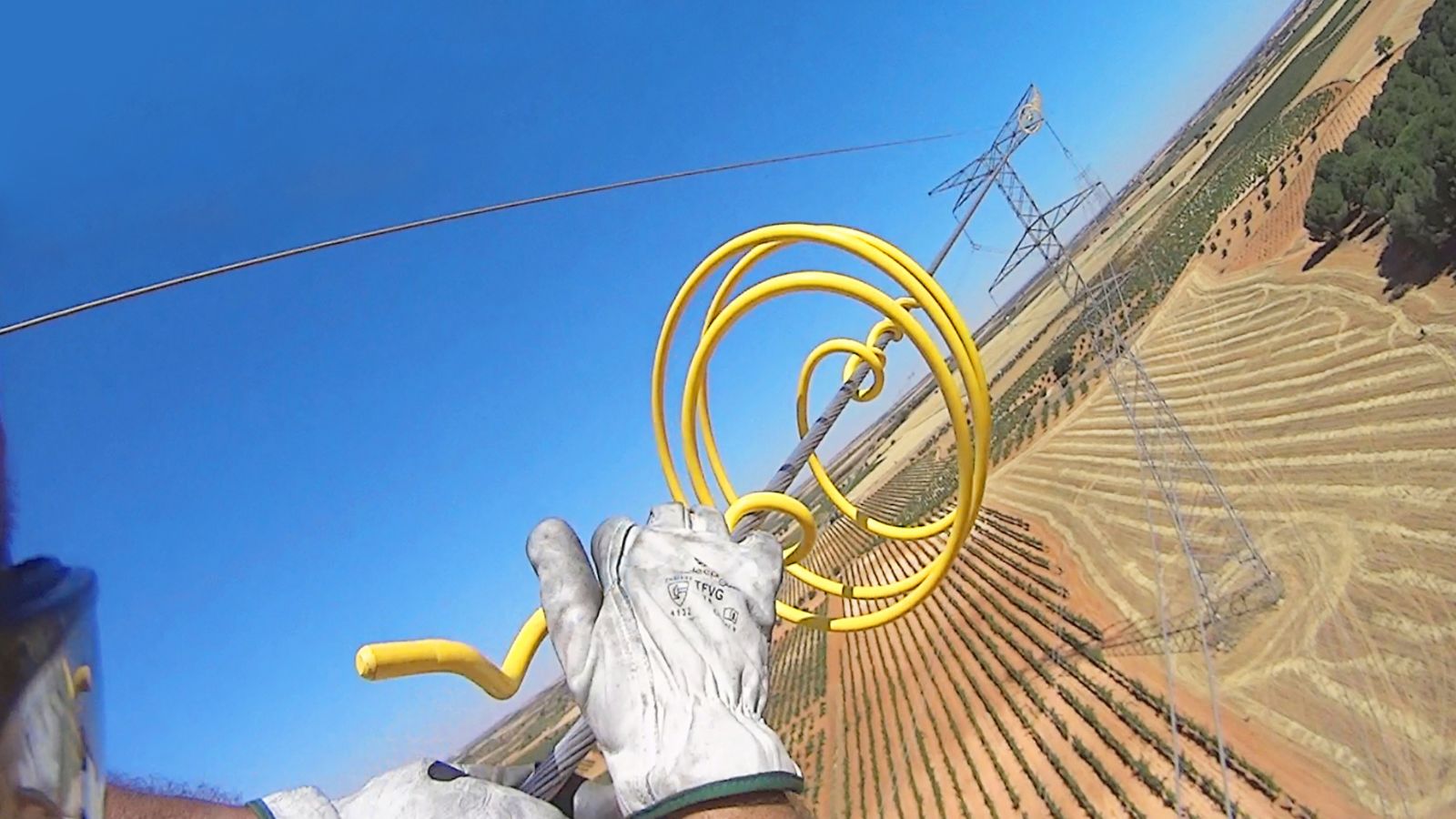
The aim of this project is to encourage the adaptation of electricity grid infrastructures for the conservation of birdlife and to reduce the risks inherent in employees working at height.
Development of a prototype semi-automatic system for removing spiral-type bird guards.
System testing in the field.
Adaptation of the final version of the prototype for further field testing to determine whether the solution satisfies the set objectives.
The results of the first test in a real-world environment, where a professional successfully removed bird guards by operating the robot from the ground, have been key to further improving this solution and make it a real option for improving the safety and sustainability of our activity.
We seek the broadest and most global use of Internet of Things to monitor equipment, work tools and security elements among others that allow, on the one hand, the exploitation of data with the aim of improving physical security both in real time and in subsequent analytics and, on the other hand, to improve efficiency in electrical system management.
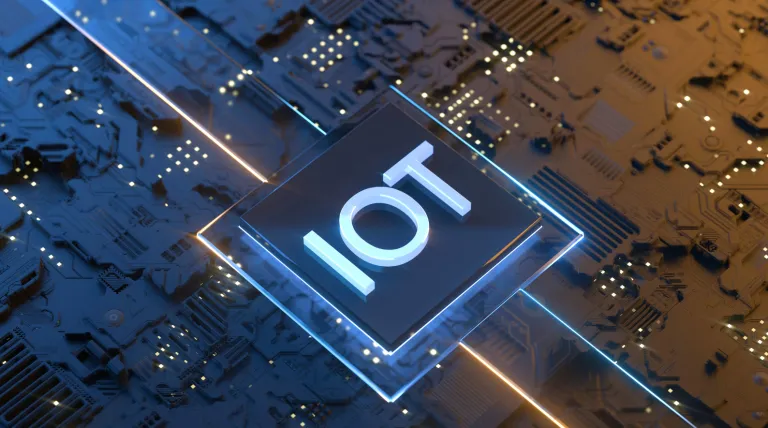
To improve network development and asset management efficiency
Active
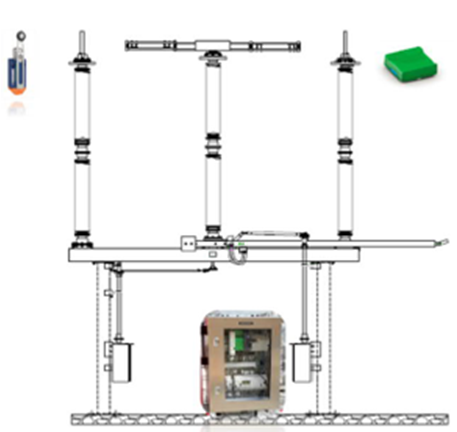
Development of a real-time interface able to reliably identify the open/closed/intermediate status of the disconnector and to deliver all the disconnector data to a VR platform, allowing the technician have an overview of the status and minimise the visual inspection time of the disconnector, reducing costs and man-hours of this activity.
Objective: To achieve predictive maintenance of the disconnector, controlling all its variables, minimising and even eliminating the local operating costs associated with disconnector operations.
Validation of the developed system in a real environment.
To improve network development and asset management efficiency
Active
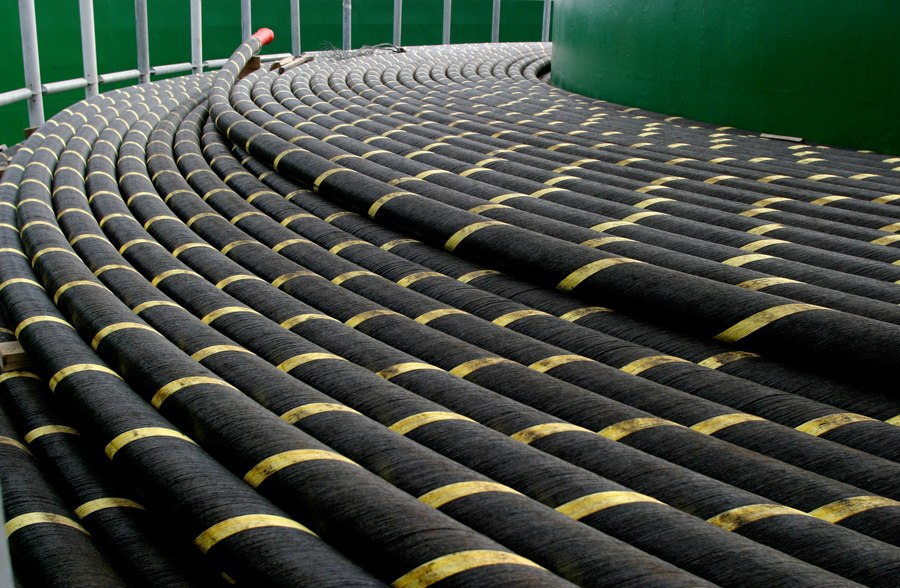
Solution benchmark (2) and service models for submarine cable sensing via optical fibre. Calibration and characterisation tests will be performed in a real environment and then a benchmarking period of approximately 2-3 weeks will be initiated with each solution.
Validation of a submarine cable monitoring system capable of detecting and classifying the main potentially hazardous events for the cable.
To improve the sustainability of our processes and activities
Active
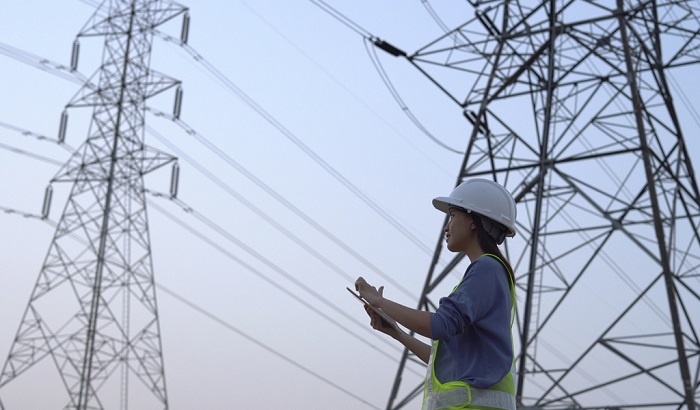
Elewit is working on a project that consists, on the one hand, in the implementation of a sensor that identifies the presence of sulphur hexafluoride and quantifies its concentration in ppm in the high voltage compartment isolated with SF6 gas, while, on the other hand, it is also developing and validating the electronics necessary to adapt the signal obtained from the sensor to a quantifiable measurement in engineering units, as well as the communications circuits to facilitate its transmission and thus improve predictive maintenance.
This proposed use case essentially takes advantage of the multi-connective and ultra-reliable nature associated with 5G technology. The tests are run in the the Morvedre sub-station, close to Sagunto.
• Development of a sensor that identifies the presence of sulphur dioxide.
• Development and validation of the electronics necessary to adapt the signal obtained from the sensor to a quantifiable measurement in engineering units.
• Installation of the sensor in a switch at the Morvedre substation.
Improve network development and asset management efficiency
Active
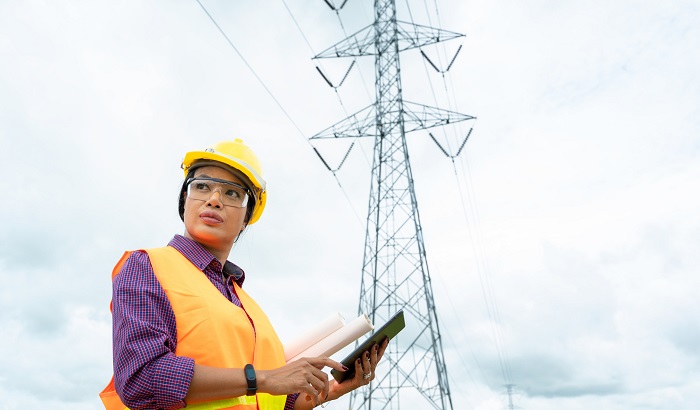
In this project, low-cost IoT devices that are minimally invasive are developed, in order to monitor the dynamic response of safety elements and detect unsafe behaviours when carrying out work on transmission grid elements.
Design and manufacturing of prototype(s)
Validation of prototype(s) in transmission grid elements
Validation of the MVP in transmission grid elements
Industrialisation and integration to third parties
We are committed to new technologies related to storage, batteries, power electronics, gas and chemical-based products, nanotechnology and new materials, as well as innovative asset manufacturing devices such as 3D printers.
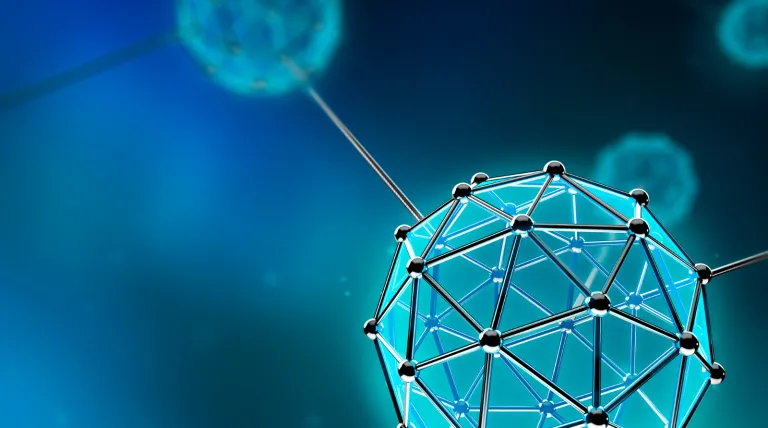
To improve network development and asset management efficiency
Active
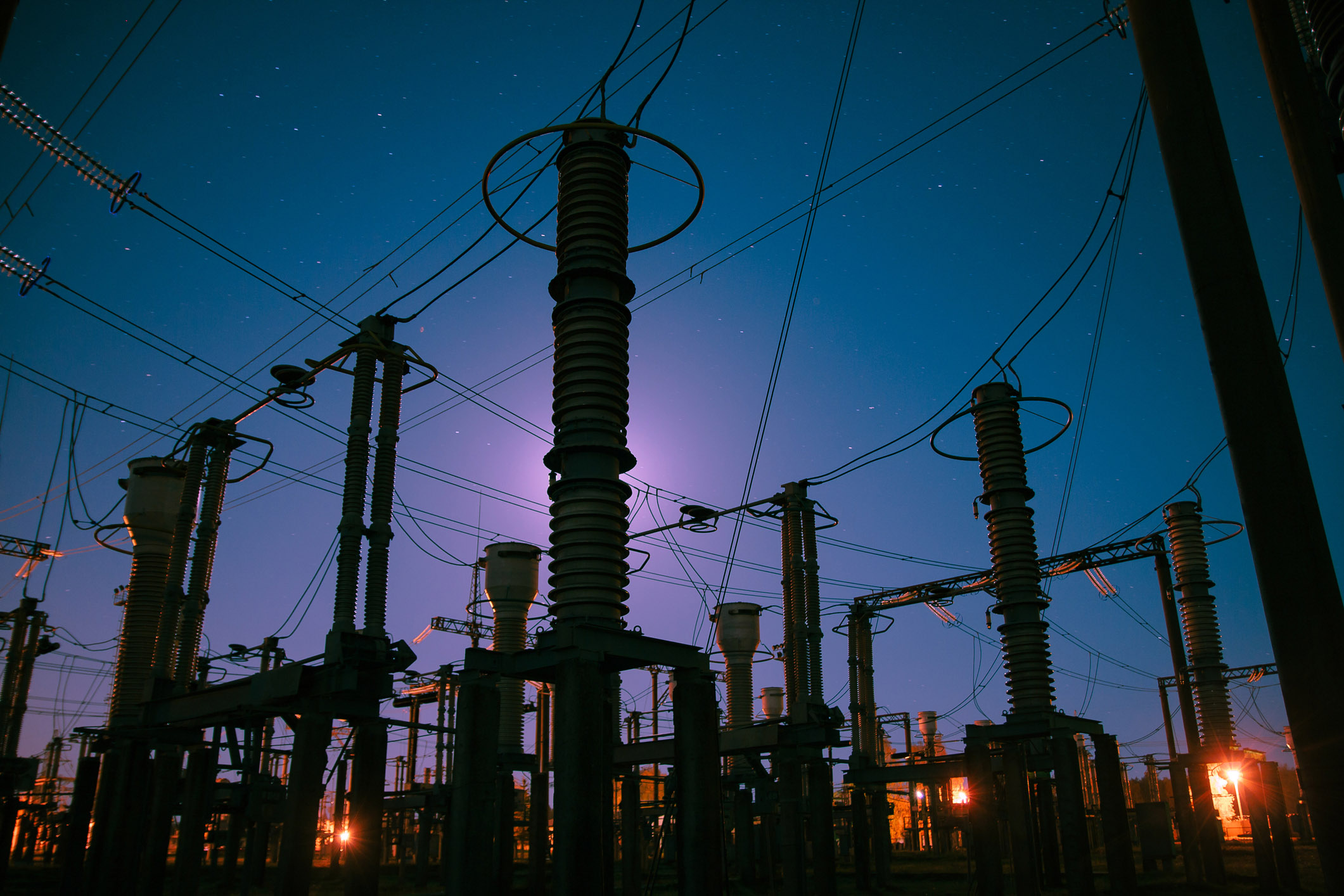
The use of fibres in concrete is becoming more and more widespread. But can we go further? How about obtaining these fibres from recycling?
The main objective of the project is to define, obtain and extrude polypropylene fibres and perform different tests with these additives in concrete, so that they can improve the physical characteristics of the concrete, identify the advantages and disadvantages, as well as assess which fibres are the most suitable for REE (in form and dosage, or mixed with non-recycled fibres) for construction and to contribute to sustainable development.
• Reduction of plastic waste.
• Reduction of steel used for reinforcement.
• Possible reduction of concrete volume in foundations.
• Economic savings in the work units where it can be used (estimated at 8%-10%), mainly due to the ease of execution.
To improve the sustainability of our processes and activities
Active
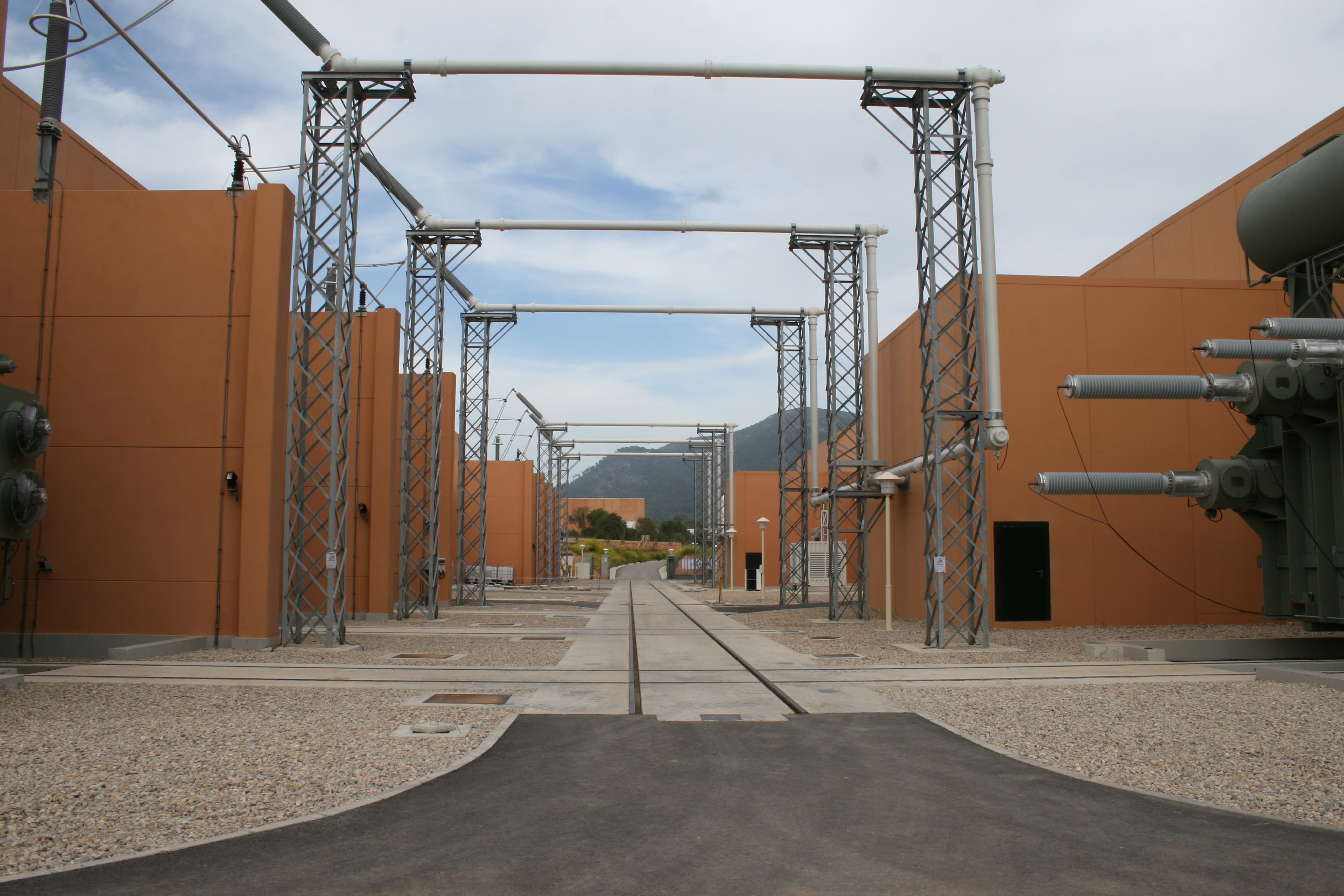
Project for the collection of atmospheric water (condensation of water contained in the air) and the application of renewable energies.
Objective: To achieve self-supply of water for the electrical substations, thus avoiding dependence on external supplies or connection to municipal supply networks.
The objective of Sustainable Water is to move to a more sustainable approach based on the technique of “atmospheric water collection” through two main tasks:
- Evaluating the feasibility of this approach based on the statistical water supply needs of RE substations and the availability of atmospheric water resources along Spanish geography.
- Once the viable areas have been identified, the development of a state-of-the-art equipment (patent in progress) and its test in a real facility.
Development of new system to improve the performance of existing commercial devices for the collection of atmospheric water and its application to the water supply of REE substations.
To improve network development and asset management efficiency
Active
Project for the design of support and efficient node-based assembly system for Overhead Electricity Transmission Lines.
Objective: Compactness, Cost Reduction and Sustainability in overhead line supports.
Design of an anisogrid support for 220 and 400 kV lines using the node designed by Anisopter. Fabrication and testing of the designed node.
To optimise system operation and increase network flexibility and resilience
Completed
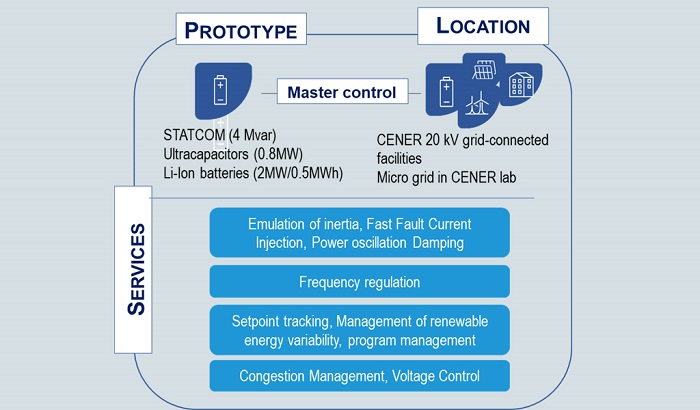
In this project, a hybrid device has been developed and tested, capable of providing different flexibility services to the electricity system, especially in isolated systems such as the one in the Canary Islands. The device integrates a statcom, a lithium-ion battery and supercapacitors, optimally coordinated and managed by an advanced control system.
Define the technical and functional requirements.
Develop the control architecture.
Prototype engineering
Develop the central control system for the coordinated operation of various flexibility devices.
Manufacture of equipment, FAT testing and installation.
Operation of the device and evaluation of functions .
To improve the sustainability of our processes and activities
Active
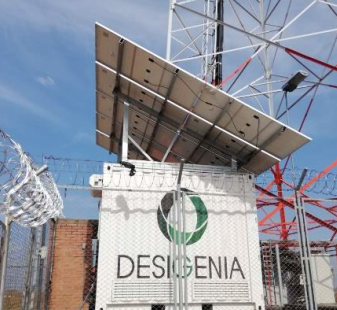
The PLATEA RENEWABLE project aims to provide a renewable power supply system for auxiliary services in a substation as an alternative to the use of a generator set.
Its main objective is to reduce environmental pollution by means of a hybrid generation system (photovoltaic+batteries) and to make the system portable for use in other locations.
• Combine the various energy sources (solar, batteries and generator set) and provide the charge with the power required by it.
• Obtain maximum use of renewable sources.
• Manage the charging of the batteries.
• Monitoring and Supervision System: to control the operation of the system and the functioning of each of its elements.
Improving the integration of renewable energy sources
Active
The purpose of the project is to develop a hybrid storage system equipped with a grid-forming monitoring system. Therefore, firstly, the functional requirements that the system should provide were specified and PSCAD models were developed incorporating the controls developed. These models have been used to check, through simulations, the fulfilment of the functional requirements. Laboratory tests are currently being carried out to try to replicate the behaviour of a real electricity grid in order to study the behaviour of the device in response to different events. The project is being carried out in collaboration with HESStec and IBERDROLA.
Specification, development of controls, models and simulation.
Testing of the system in the Hesstec laboratory ("GridLab").
Improving the integration of renewable energy sources
Active
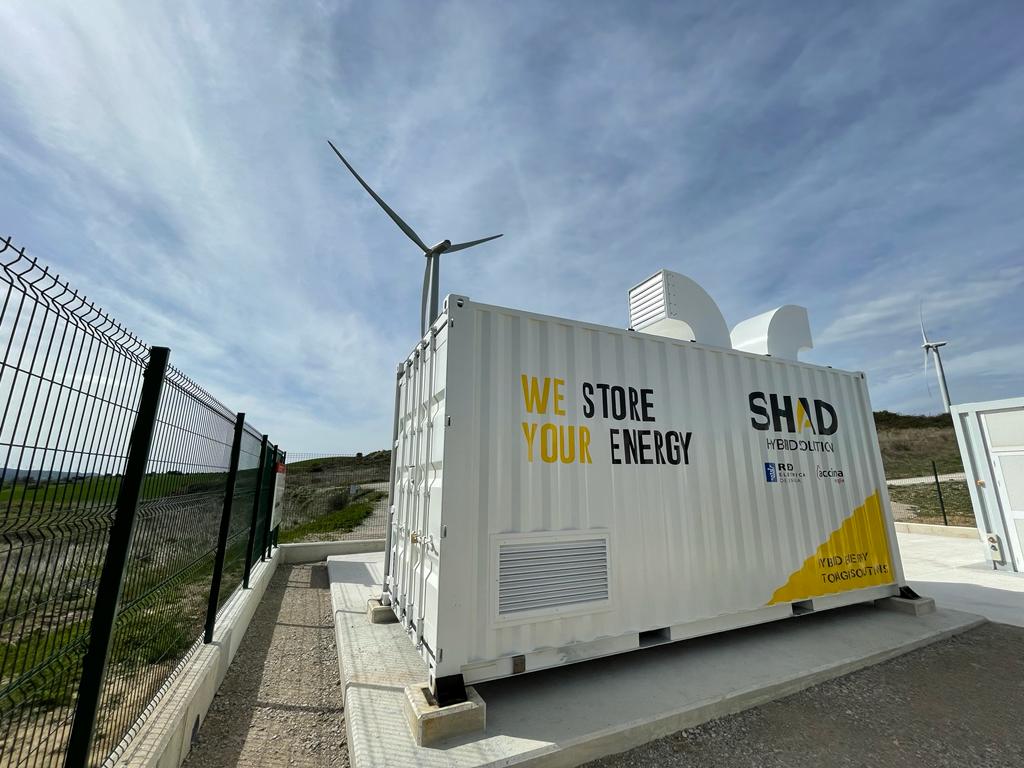
The objective of the project is to provide a full-scale demonstration of the benefits and services that uncontrollable renewable energy plants in combination with dedicated storage systems could provide to the system. Therefore, a series of capabilities to be provided have been established by the generation and storage plant, specific models have been developed, and techno-economic studies have been carried out to determine the optimum size and degree of hybridisation (batteries + ultracapacitors) for the experimental plant in Barasoain, owned by Acciona, where the tests are being carried out. The last phase of the project is to carry out tests in a real environment where the slow and fast response capabilities will be tested. The testing of the former is currently nearing completion.
To increase the safety and well-being of our employees.
Active
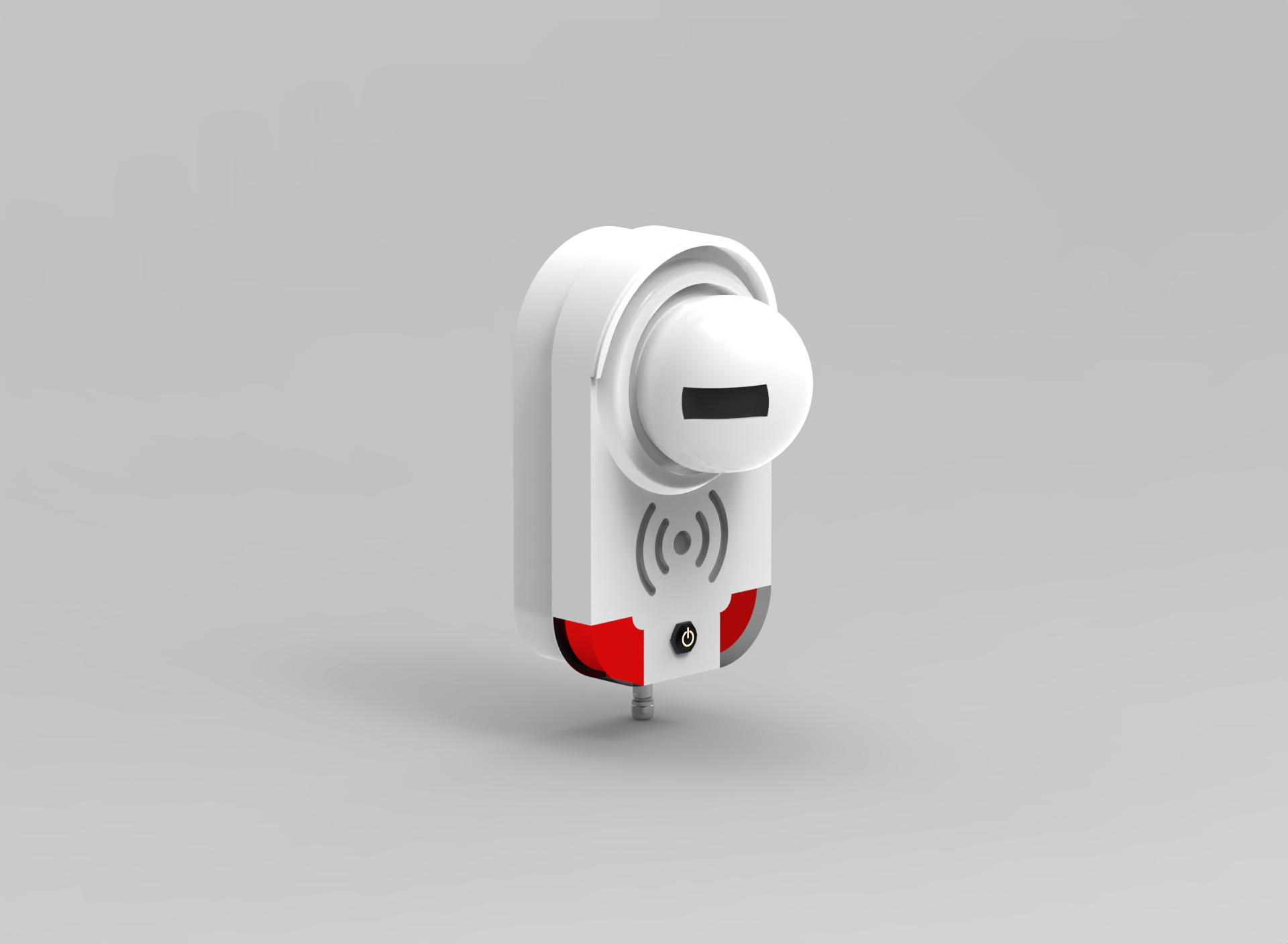
SafeDelimit is a hardware product for safe area delimiting at industrial environments. Thanks to its LiDAR capabilities, it is able, once programmed, to warn the technician or operator that he is entering an area of the installation in which, for safety reasons, he must not be. This solution won the DESPEGA intra-entrepreneurship program held in Redeia.
SafeDelimit is an innovation initiative winner of Redeia’s DESPEGA intrapreneurship program. During the first phase, the fit of the solution was tested, as well as its feasibility and potential for implementation at Redeia.
The first prototype of SafeDelimit was developed over a six month period and its operation was validated in a controlled environment.
MVP development, validation by Redeia's professionals and study of the solution's market fit.
- Intrapreneurship
- ¿Qué motiva a nuestros intraemprendedores? (Available only in Spanish)
Improvement and development of methodologies for automation optimising of asset inspection and diagnostics
Active
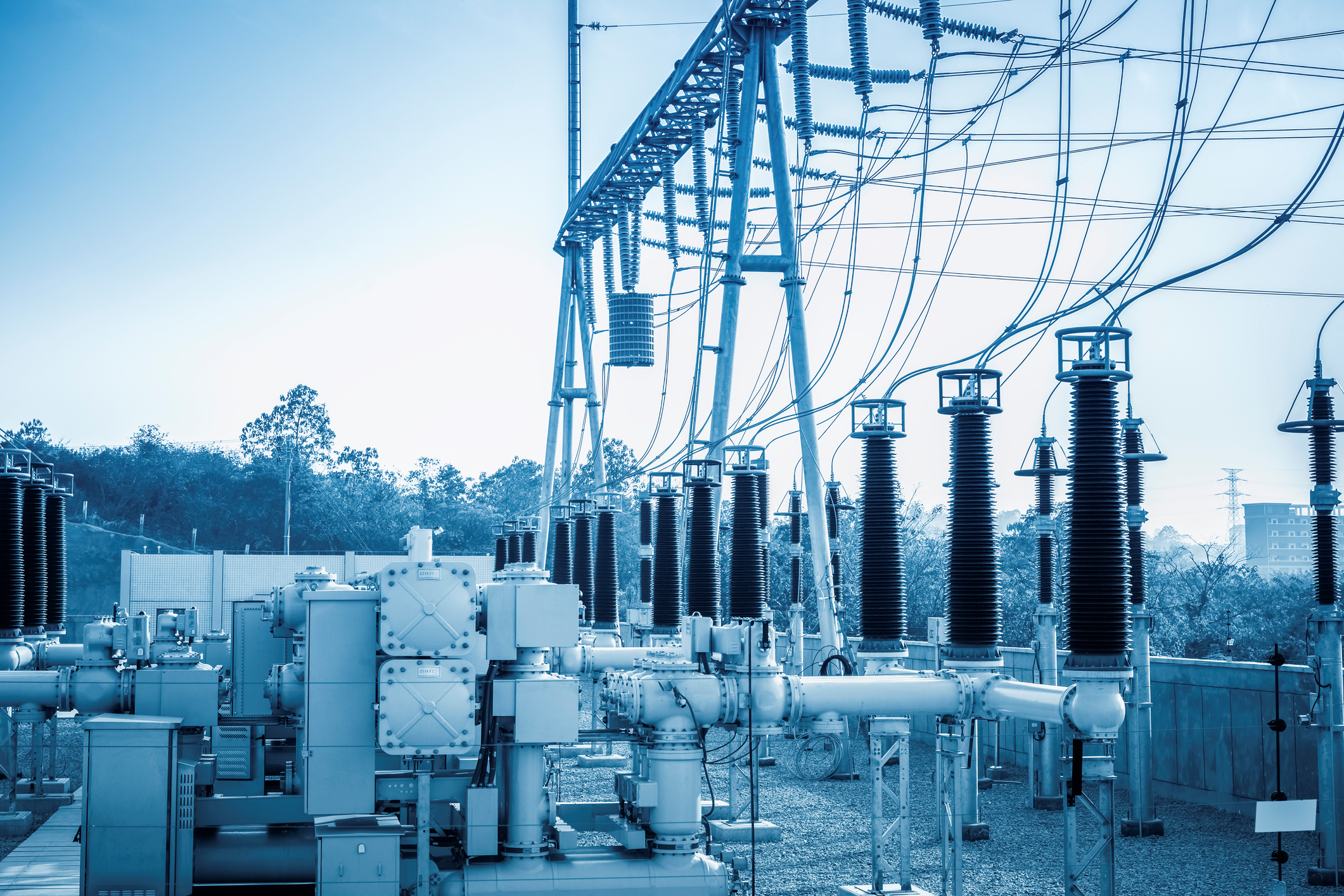
Based on technologies such as internet of things, artificial intelligence and data analytics, ASUMO aims to improve procedures and activities related to maintenance, engineering and construction areas in order to optimise and automate transport network infrastructure development processes, as well as in-service asset management.
• Technical-economic analysis and scalability study of the adopted solutions.
Improving the integration of renewable energy sources
Active
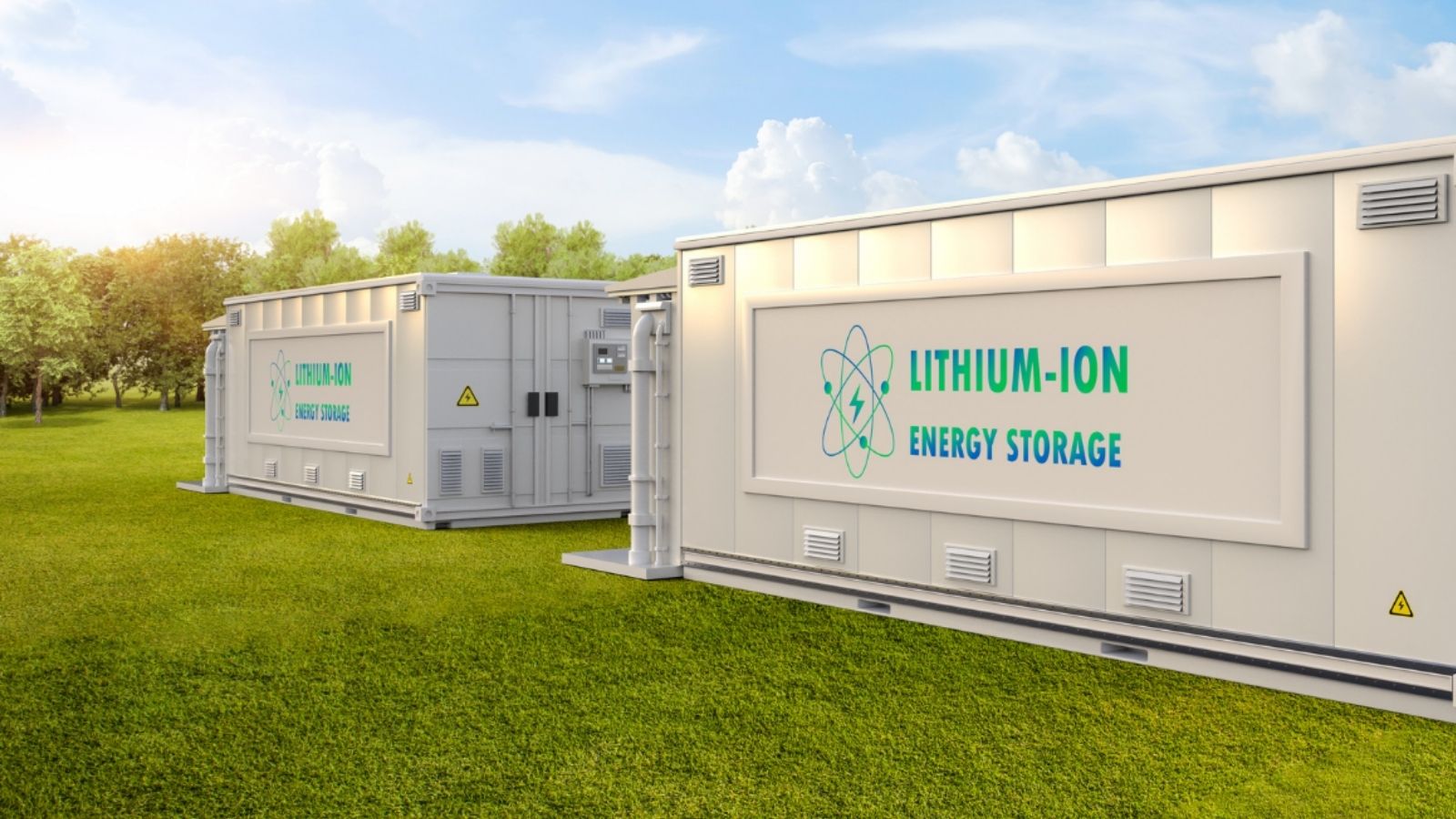
The Virtual Synchronous Compensator (ViSynC) project is a crucial initiative on the path towards the ecological transition and the integration of renewable energy sources in the electricity system. Its relevance lies in the growing need to increase energy storage capacity in Spain to meet ambitious energy and climate targets. ViSynC addresses this challenge by developing a hybrid storage system combining lithium-ion batteries and ultracapacitors, managed in synchronous grid-forming mode, which allows maintaining grid stability and improving the integration of intermittent renewable energy sources.
ViSynC is an example of how Elewit is at the forefront of the energy transformation, leading the way towards a cleaner and more sustainable future. In this project we work with other companies, such as: Redeia, Red Eléctrica, Hesstec, CEN Solutions, S2 Grupo and CERE.
The ViSynC project is supported and funded by the following institutions:

The project is divided into the following work items:
- 1. System Design.
- 2. Device Development.
- 3. Implementation.
- 4. Validation and comissioning.
- 5. System evaluation and conclusions: operation of the system connected to the transmission grid and analysis of the device's contribution to the grid.
- 6. Consortium coordination and management.
• Improve the economic viability of storage systems.
• Optimised hybrid lithium-ion and ultracapacitor storage solution capable of providing multiple services to the system.
Safety and wellness of people
Completed

The Ergonomic Grounding System Project (SERPAT) is an advanced solution for achieving the objectives of zero accidents and incidents in our activities. This project comprises a set of two devices designed to place and remove portable grounding safely and ergonomically, thus minimizing the inherent risks of this activity. Ignoring the implementation of a proper grounding process can have serious consequences in terms of safety for people, assets and the electrical system.
- Phase I: In 2020, Elewit and Red Eléctrica developed the innovative SERPAT project, which aims to improve and evolve the tools currently in use.
- Phase II: In December 2021, tests were carried out at the Galapagar substation, in which the utility and its differentiation from traditional or market methods were validated.
• Minimizes physical exertion.
• Eliminates risks of imbalance and error with adjacent positions.
• Valid for heights over 7 meters.
• Uses safety keyed clamps that minimize human error of disconnecting in the wrong order.
• Replicable in other companies in the sector.
Electric grid infrastructures and asset Management
Active
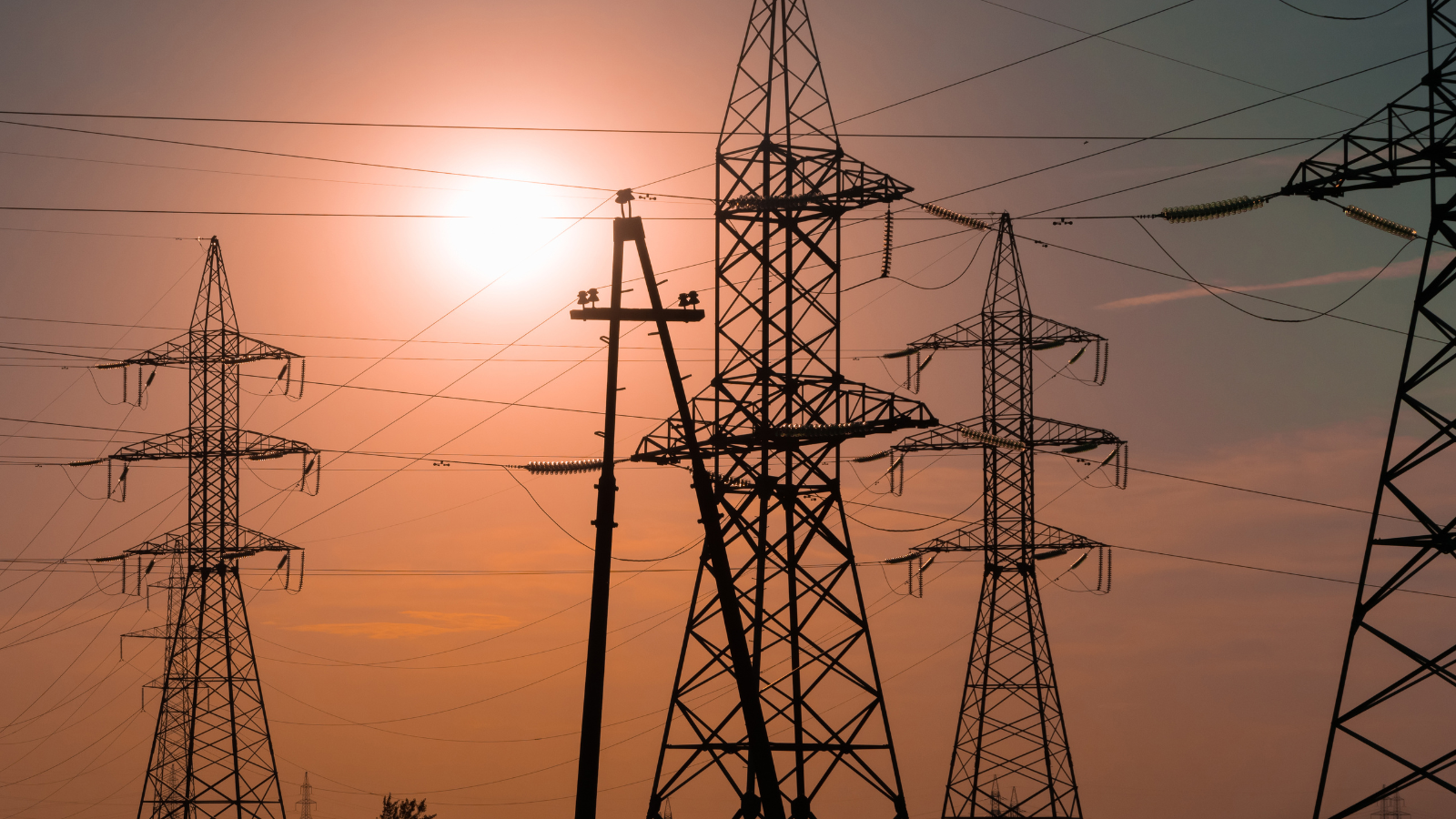
The objective of the project for the alternative design of transmission network pylons is to study new pylon designs that can reduce manufacturing and installation costs, as well as the associated carbon footprint thanks to the recyclability of the potential new materials that could be used. For this purpose, after a first technical-economic analysis, the second phase has been started, where mechanical, electrical and foundation calculations, constructability and maintainability throughout the useful life of the installation are established, taking into account criteria of recyclability of materials, circular economy, reduction of carbon footprint and health and safety of workers.
- Phase I: Ended in 2023 and analyzed the feasibility of implementing the new concrete pylon prototype.
- Phase II: Starts in 2024, focused on the development of detailed pylon engineering.
Study and development of a new singular support design with greater social acceptance for high voltage power lines.
Electric grid infrastructures and asset management
Finished

With the aim of seeking innovative and efficient solutions to continuously monitor SF6 gas by-products, Elewit launched the challenge "continuous monitoring systems for SF6 polluting by-products in high voltage equipment of the electricity transmission network". The objective was to find a solution that would not only detect insulation anomalies, but also provide information with which to characterize as accurately as possible the cause of the anomaly in a reliable and selective manner.
Once the winning proposal of the challenge, presented by the Nanophotonics Technology Center of the Polytechnic University of Valencia (UPV), was selected, a proof of concept was performed with three main objectives: to determine the efficiency of THz spectroscopy to detect the presence of SO2 and to define its threshold; to study the effect of the presence of SF6 on SO2 detection and to analyze the threshold of SO2 detection in a SF6 gas contaminated with a defined concentration of SO2.
Testing the efficiency of a TeraHertz (THz) based sensor for SO2 detection in SF6 filled Gas Insulated Switchgear (GIS)
Once the project was complete, the report concluded that it is possible to measure SO2 concentration from outside the chamber using continuous wave THz spectroscopy. This is important because SO2 is a decomposition by-product of SF6, so its identification and measurement eases gas quality monitoring.
Improving the sustainability of our processes and activities
Active
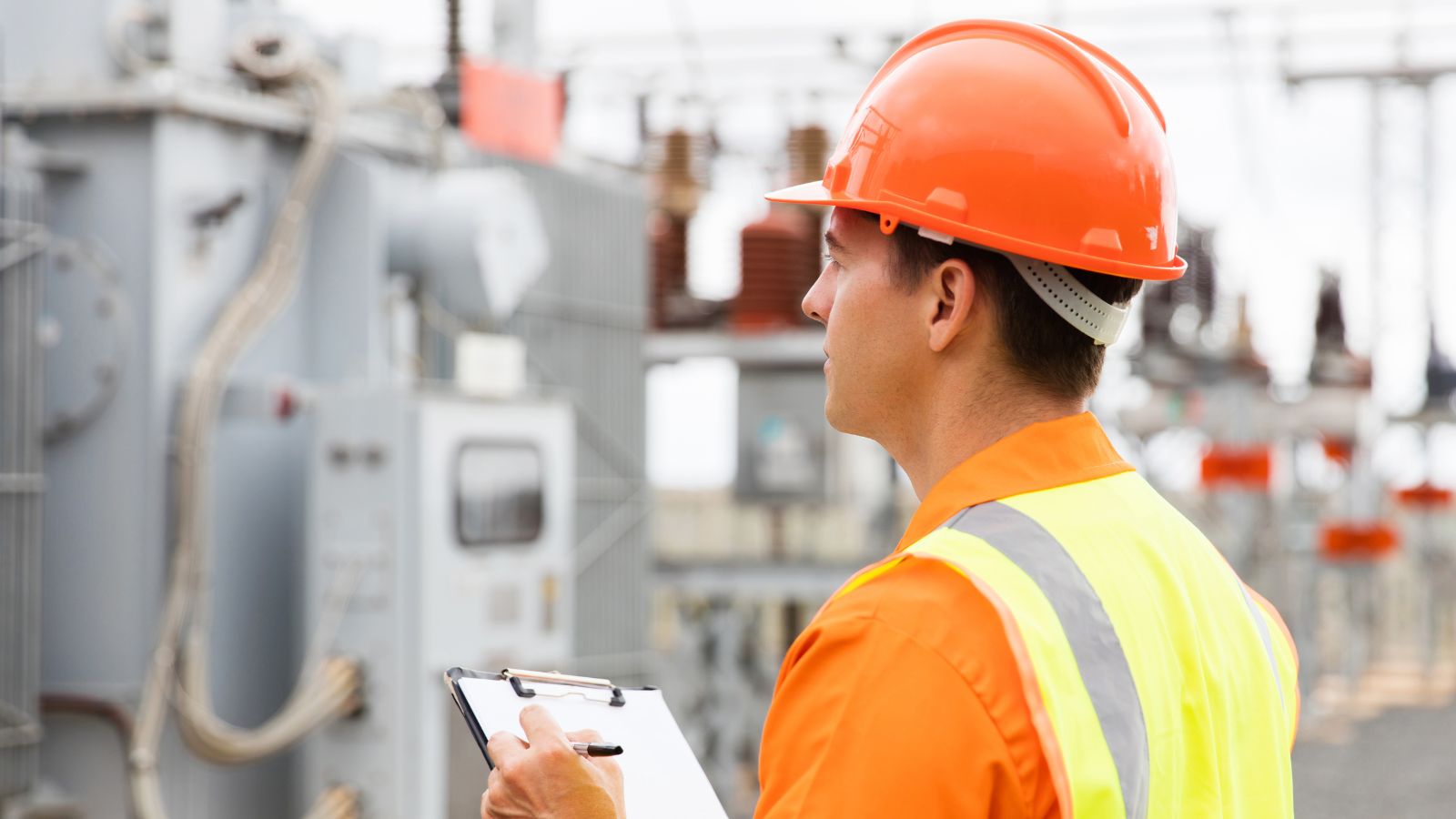
The CICA Project, developed by Red Eléctrica, Elewit and SHEMAR, consists of the implementation of composite insulated cross arms for the deployment of electricity transmission lines. This solution offers multiple benefits, as by reducing the width of the overhead clearance (ROW) and the dimensions of the supports, their environmental and social impact is minimised.
- Phase I: Installation of composite insulated cross arms (CICA) for the deployment of electricity transmission lines.
This solution reduces the environmental and social impact of the electricity transmission lines by reducing the width of the overhead clearance and the dimensions of the pylons. In addition, it enhances efficiency by reducing the weight of the infrastructure, the assembly time, and the operation and maintenance costs.
Development of distribution grid infrastructure
Active
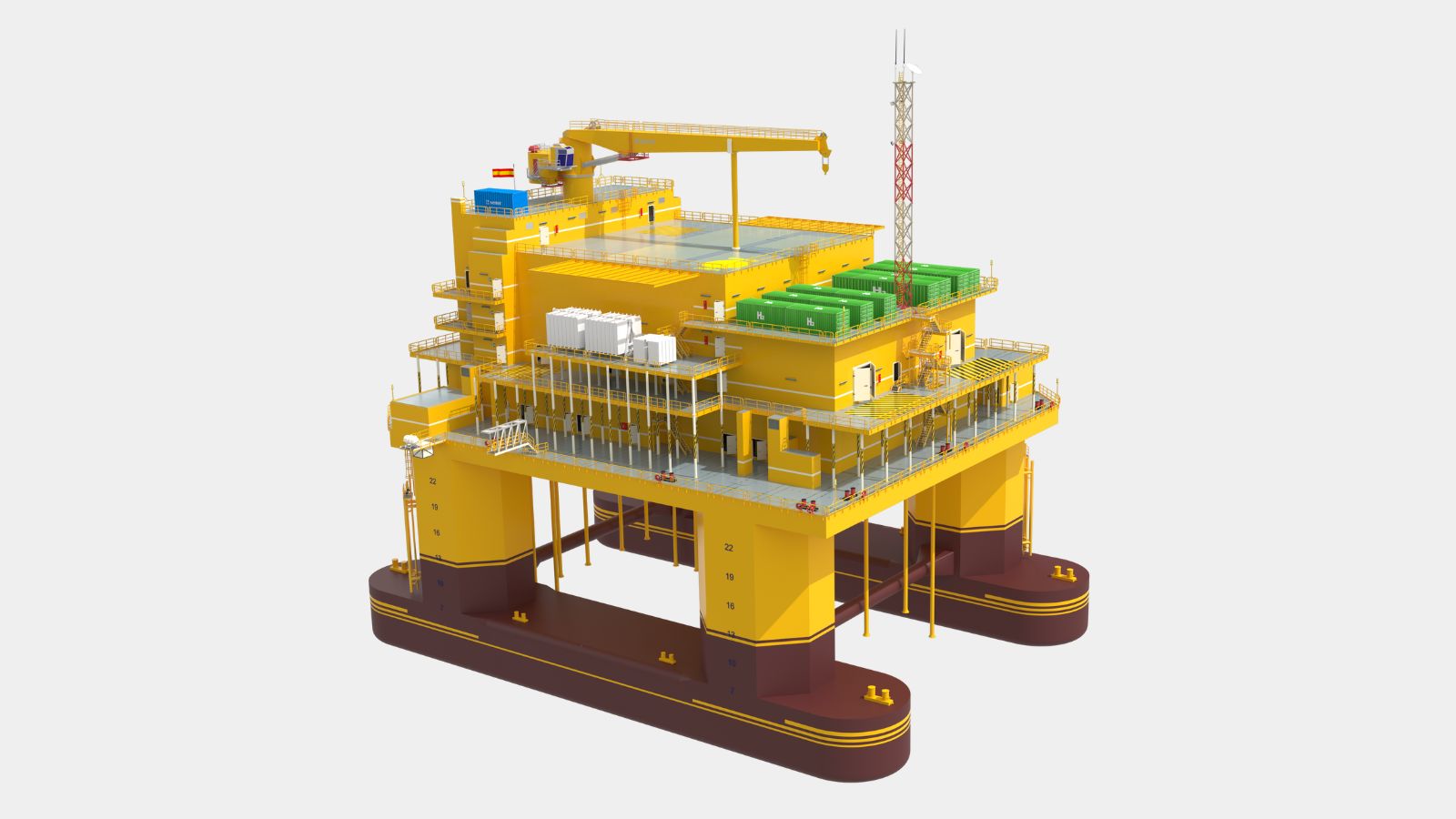
The project aims to design and test at scale a zero-emission high-voltage floating offshore electrical substation, capable of transmitting high power capacities, between 400 and 500 MW, at voltage levels of 220 kV.

PHASES
- Phase I: For the design, Red Eléctrica is working on:
- Functional specification and configuration of the sub-station, selection of HV equipment (GIS switchgear), definition of requirements for auxiliary services, etc.
- Analysis of the interaction between the dynamic generation and export cables and the floating platform.
- Research into maintenance strategies that minimise the need for personnel to visit the installation site once it is put into service (monitoring systems, actuators, etc.).
- Research into the environmental impact of this type of infrastructure and the creation of methodological guides to assess them.
By combining advanced technology, operational efficiency, and a commitment to marine conservation, this initiative lays the groundwork for a more resilient offshore infrastructure that respects the ecosystem and contributes to achieving the objectives of the Offshore Wind Energy Roadmap in Spain.
Electrical grid facilities and asset management
Active
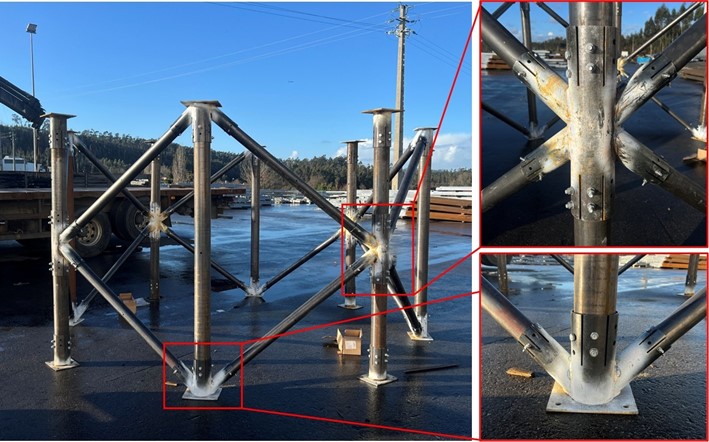
The objective of the project is to create a new pylon design that is different from traditional ones, in order to reduce the social and environmental impact of electricity transmission lines.
- Phase I: Registration of the Anisopter pylon as a European Community design, which can be seen here. This milestone represents a significant advance in making these innovative pylons a reality.
- Phase II: Production of a full-scale module of a pylon section using the Anisopter node system for the purpose of subjecting it to mechanical tests to validate its viability and efficacy before moving on to the next phase of implementation in electrical infrastructure.
The organic appearance of the tubular lattice in the new design for the project seems less intrusive than traditional electricity pylons. The visual appearance has been improved by removing the frames from the design and reducing the number of connections and reinforcing bars by more than 50%. Anisopter pylons are also more compact, in some cases nearly 10 metres shorter, 2 metres narrower at the base and 13 metres slimmer at the top compared with some traditional lattice pylon designs.
- The ANISOPTER project, an alternative to transmission tower current designs in a more efficient and sustainable way
- “The new Anisopter pylons could help reduce steel consumption, installation time, and the visual impact of overhead electricity transmission lines”
- Elewit, Red Eléctrica and Anisopter Insightful Research have registered a new support design for high-voltage lines
We are catalysts for internal innovation in Redeia. We make the most of outside talent and the power of disruptive technologies to develop innovative solutions to meet the challenges of energy transition and digital transformation with success.

